|
It's been a while since I posted a fish update. I've been putting it off because it doesn't make for good reading. I lost my Helfrichs firefish in September last year, I'd kept him for just over a year. There was no obvious cause, he just ate less and less until he eventually passed away. At the time I put it down to just one of those things. All was well for the next 4 months but then my Rainfords goby started to go downhill in the same manner, he began eating less and less till he too died at the end of January. I'd kept him for just under 2.5 years. He was a big fish, almost certainly fully grown and perhaps it was just his time, but still I did wonder if the bullying by Yellow wrasse was somehow related. There wasn't any actual fighting just a bit of posturing every now and again but it might have been extra stress that he could have done without. Then three weeks later I also lost my beloved Pink Streaked wrasse. I'd kept her for just over 4 years, according to information found on the internet the average lifespan of these small wrasse is 4-5 years so it's quite likely that she did just die from old age. The following month I lost one of the pair of Blackbarred gobies, it too stopped eating and died. Just 6 months with me for that fish. Then in April I lost the Fathead anthias (after 13 months) and in May my beautiful Spotted Mandarin also died (just under 2 years with me). When I removed the Mandarin's body it looked perfect in every way, nice and fat with no torn fins.
Now I don't really know what to think, maybe the deaths are totally unrelated but I am beginning to wonder if there is something in the tank silently killing fish in my tank. I sent off for an ICP analysis at the beginning of May and everything seems fine except for Cobalt which is still elevated. 15 months and the TMC Ecoreef rock is still leeching cobalt!! I hate this rock so much, it's hands down the worst decision I have ever made in all my years of reefing. Looking at all the test results, it's going to be many more months, maybe even another year before the cobalt is finally gone. I have scoured the web for information about chronic cobalt poisoning but haven't really turned up anything useful. Most research involves short term exposure of fish to much higher levels. lab.atiaquaristik.com/share/7132f6e0d9425dd6e201 It goes without saying that I am hesitant to introduce any new fish to this tank now. At least the corals appear OK, if they were slowly dying too then I'd be ripping out the rock and starting afresh. My current fish list is: 1 x Tanaka Possum wrasse (4.5 years) 1 x Yellow wrasse (3 years 9 months) 1 x Whitecap goby (1 year 7 months) 1 x Blackbarred goby (9 months) 5 x Ghost cardinals (6 months)
1 Comment
I received the results of my second ICP analysis yesterday. Cobalt and Aluminium are still elevated but there is a little less than before so maybe the TMC eco rock has stopped leeching or is a least leeching less now, time will tell. The nutrient levels are still low despite my feeding a ton of food and dosing extra nitrate. I have been seeing a little bit of green cyano on the rocks and the sand is looking a bit greener too. I'm still debating whether I should do anything about it or just wait and see. I'll probably just wait and see. Oh and I have been plucking out tiny bits of Ulva from the sand (mainly) whenever I see them, grrr! I'm resigned to have to keep doing this from now on. The sun coral has christened the new rock, the first baby is coming along nicely. The baby Trochus snails are doing really well. I've been moving any that I find in the sump over to the refugium. The refugium needs cleaning and they are better off in there, I want to avoid the scenario where they get crushed by an impeller or jam up my X-filter. I have discovered some in the DT too which I'm surprised about, I thought that they would all have been wrasse food but I guess they are able to hide well enough to avoid such a fate. They do blend in with the rockwork extremely well. The Coco worm continues to do surprisingly well, it has extended its tube even more now. Kylie the Pink Streaked wrasse is keeping a beady eye on it for me. I'm also pleased to report that the Menella gorgonian appears to be doing great now. It's finally decided to pop out another branch at the base, woo hoo! Unfortunately I can't get it to completely recover the sections that lost some flesh earlier on because hair algae has taken a hold. It's only possible to see the algae when the polyps are fully retracted but it does annoy me no end. When the algae grows long enough a hermit comes along and gives it a trim which I appreciate. Unfortunately the Rei Yellow wrasse seems to have taken a bit of a disliking to Jessie the Rainford's goby, I have no idea as to why; a dominance thing maybe. There is no chasing or actual fighting but a fair amount of posturing goes on between the two. When they meet they both fully flare their fins and engage in some sort of a staring contest, Jessie may be the smaller fish but he stands his ground. Rei had better watch his step because if it comes to a choice he'll be the one to go. Catching him would be the issue... A quick pic of Sunny the Sunburst Anthias.
I have now reached the point in my updates where Coronavirus takes hold and the UK along with pretty much everywhere else in the world goes into lockdown.
I allowed Sunny (the Anthias) three weeks to settle, making sure that he was eating well and healthy looking. During that time I noted the nitrates/phosphates levels were continuing to fall so I thought I should get some more fish in there pronto. Since there was no way I could source any new stock from the LFS due to the lockdown I decided to move some over from the Reefer. I had purchased a fish trap ages ago but never got the chance to put it to good use, it was the smallest trap that I could find (the Little ocean small fish trap) but even so there was no way it was going to fit into the tank as it was, some coral need to be removed. I cut out a significant branch of the Pinnigorgia gorgonian and gently (as far as I could) snapped off the yellow Dendrophyllia and Balanophyllia from the rockwork. I took the time to scrape off every single head of Utter Chaos zoanthids that had grown onto the Balano rock as I'm not going to be transferring these 'pests' over to the the new tank. Once the yellow Dendro was out of the way I carefully slid the fish trap into the front left side of the tank. Unfortunately the magnets are on the other side of the trap in this orientation so I wasn't able attach it to the glass, I had to simply lay it on the sand. I expected it to take a while for the fish to get used to the trap but within a few minutes Jessie the Rainford's goby and Kandy the Spotted Mandarin had popped inside to check it out. The fish I really wanted to catch first though were Rei the Yellow wrasse and Spike the Firefish but they were not impressed with the new state of affairs at all. Rei immediately vanished into the sand and Spike just kept well away at the back of the tank. I waited for 2 days but it became clear that neither Rei nor Spike were going to venture anywhere near it any time soon, in fact Rei actually decided that sleeping in the sand was far more preferable to eating. On the third day I decided my plan of catching specific fish was a non starter so I opted to try to catch any fish that I could. Jessie the Rainford's goby was first in and the trap worked perfectly, a quick tug of the cord and the door dropped down with the fish safely inside. Two days later it was Edna the Possum wrasse, the day after that it was Kylie the Pink Streaked wrasse and the next day it was Kandy the Spotted Mandarin (actually Kandy loved the trap so much that he spent more time inside of it than out). The newly transferred fish seem to like their new home and it's a pleasure to watch them weave in and out of the caves in the rockwork. Unfortunately it seems I am currently person non grata, whenever I approach the tank they all vanish at breakneck speed and it breaks my heart just a little bit every time. Hopefully they will forgive me in a few weeks. Feeding has been a bit hit and miss in the new tank and I have been worried about the Kandy especially. He used to feed extremely well on frozen food in the Reefer but in the new tank all prepared foods were refused. I decided to set up a second Tisbe pod culture since it seems lots more might be needed. Fortunately after two weeks he's back on the frozen again (PE mysis rocks!) so I'm a little less worried about slow starvation now. I have also transferred over the Orange Dendrophyllia and both of the Tubastrea corals so now I have a little NPS garden going on in the new tank. It's such a pleasure to be able to easily feed them at the moment, there's no fish trying to steal the food or corals overgrowing/around them and I don't have to bash SPS corals with a pipette trying to reach them. I wonder how long that's gonna last for. I am sad to report that I lost my remaining Nudus goby (Tomiyamichthys nudus) a couple of weeks ago. Hop, along with his mate Skip and Candy the red striped goby, were the first fish to be introduced to this tank. I lost Skip after just 15 months and Candy disappeared after 2 years. I was so hoping that Hop would make it to his 3 year anniversary but he died 2 months short of it. I am assuming that they all passed away due to old age but I don't really know for sure. I wish nano gobies had longer lifespans. This leaves me with a bit of a dilemma, what should I do about Al the pistol shrimp? He no longer has a partner goby to look after him. I know that he's still alive as I can occasionally hear him clicking and at feeding times I sometime see an antenna or two poke out from one of his burrow entrances but now that he's on his own I doubt that I will see much more of him. I'm tempted to try and find him another goby but this species of pistol shrimp is widely reported to only pair up with Whitecap gobies. Clearly that's not the absolute truth because he paired up with the Nudus gobies (after his original Whitecap partner jumped out of the tank through the mesh lid!). How long can pistol shrimps potentially live for in captivity? Al has been with me for going on 3 years too and who knows how old he was when he was captured, is he still in the prime of his life or coming to the end of it, I just don't know? Something to think about. Interestingly I've noticed that Jessie has recently taken a keen interest in one of the pistol shrimp's burrow entrances. It hafs been pretty hard to miss this 'interest' because he has spent the last 3 days solidly excavating sand from in front of it. I can only assume that Jessie saw an opportunity to secure some prime real estate either because, without Hop, Al has abandoned that entrance or has been forced to do so by the much bigger goby. Anyway Jessie has been very industrious and the pile of sand is now massive, so much so that he's had to start dropping it more to the left side of the tank, on top of the Scolymia which I can't say I'm exactly thrilled about. Time for a long overdue FTS update. As you can see the coralline continues to encrust apace, every now and again I scrape it off the front and sides but I leave it to grow rampant on the back wall. The plates grow quite thick until a large snail crawls across and the added weight causes a chunk to detach and they both fall down to the sand. I'm sure some eagled-eyed reefers will have spotted the presence of hair algae in some of the previous close-up shots. If it weren't for the aforementioned coralline I expect the situation would be a lot worse. It began to grow when I lost some of the Acropora to red bugs. I cut out the branches but that still left dead encrusted bases which provided the perfect breeding ground for algae. I was not thrilled about the appearance of the green hair algae but it did allow me the opportunity to purchase a gorgeous Rainford's goby who loves to graze on the tufty stuff. I've noticed recently however, that it's been starting to spread elsewhere in the tank. For example when I brought the Balanophyllia up from the sump the rock on which it was attached rapidly grew a green furry cover as did the freshly exposed rockwork after I removed the Seriatopora. Part of the problem lies with the clean up crew as they simply do not venture on to the rocks to feed any more. The Trochus and Turbo snails only bother to rasp algae from the glass walls, I think they find it too difficult to navigate around the corals, why make an effort to search for algae on the rocks when an easy meal can be found on the glass? The only snails I have found so far that make any difference to the hair algae are Money or Annular cowries. I have four of these fascinating molluscs and they do seem to have an appetite for the shorter hair algae, a patch will occasionally be mown down. I don't want to completely eradicate the hair algae as Jessie (the Rainford's goby) needs some in his diet so I'm a bit stuck as to what to do right now. The nitrate and phosphate levels are a touch under 4mg/l and 0.04mg/l respectively at my last ICP analysis (2nd September) so not overly high. I did try introducing a few new herbivorous molluscs in the hope that they would have a taste for it, (two Astralium sp. followed by three Spiny Astrea snails) but none of these new species are interested in eating the hair algae either. Typical! It seems that film algae/diatoms are preferred all round. The Trochus snails seem to do well on it anyway, last month I woke up to an alarmingly cloudy tank but it was just the snails having a bit of reproductive fun. Time for a proper tank update starting with the fish. Sadly Rocket the Red Spotted goby vanished on the 29th December 2019. In the few days prior to his disappearance he hadn't been eating as vigorously as normal, did he die from old age or was there some other reason (perhaps refugium related)? I had him for just over a 18 months. This means I'm down to just one nano goby now in the form of Hop the Nudus goby. Hop was one of the first fish to be added to this tank in December 2016, he was introduced along with a female Nudus goby and a Red Striped goby. His mate passed on after 15 months and the Red Striped goby after 22 months. Hop has been with me for 27 months at this point so I'm worried how long he has left. The clock is ticking, I really wish nano gobies had a longer lifespan. I can't always locate him every day as he spends a lot of time hidden in his sandy burrow but he usually pops out for food whenever he feels like an extra snack. Even when he's not been target fed his belly always looks rounded so he must be finding plenty of pods to munch on when underground. Edna the Possum wrasse (Wetmorella tanakai) has been with me for just over 2 years and 2 months now. She's quite secretive but much bolder now that the corals are a bit bigger. She flits from rock to rock when the light is at its peak but can be found swimming out in the open when the lights are dimmer. She loves PE mysis above all other frozen food and will home in on the bigger pieces even if they do take several 'chews' before she is able to swallow them. Kylie the Pink Streaked wrasse (Pseudocheilinops ataenia) was added next so she has been a resident for 2 years and 1 month. Another model reef tank inhabitant, slightly more active than Edna, loves to hunt for 'pods'. Her favourite food is fish eggs which she will take straight from a pipette. I wish I could find her (him?) a mate but whenever I see another Pink Streaked wrasse in a shop I wimp out in case it's the wrong sex. Rei the Yellow wrasse (Halichoeres chrysus) has been with me for a year and a half and has grown enormously. I still think of her as female but she has transitioned into a male now. If I'm totally honest this fish is too big for the tank and really needs to be moved on. I'm just not sure if he could be caught that easily, sometimes I just have to sneeze near the tank and he vanishes with a puff of sand. Tinker and Belle the Pintail wrasse pair have been with me for 16 months and they are still going strong. I did fear that I might be asking for trouble introducing two of these fish as females of this family have a reputation for changing into male in captivity and this almost always results in all out war with another male. So far, I am relieved to say this has not happened. Will it happen in the future? I do not know. Tinker regularly displays to Belle and occasionally chases her around the tank when he's feeling moody, most of the time however they co-exist quite peacefully together. These fish love to eat and will try to consume as much of the food as they possibly can before the rest of the fish can reach it. Jessie, the Rainford goby is the most recent introduction, I've had him for just over 6 months now and he is the most enchanting fish, totally peaceful and not at all shy. He naturally gives way to the larger wrasse when they come barreling past or at feeding time but he is always waiting at the top of the tank (along with the male Pintail wrasse) to try and grab as much food as he can. He can often be found sifting sand, pecking copepods off the back wall and to a lesser degree, eating hair algae. That's the lot, every now and again I toy with the idea of adding one more fish but I am hesitant to upset the status quo. All of the fish get along and are healthy so I should be content with that, right?!
My next update will be corals. Apologies for the delay in updating this blog. I'm pleased to report that Tinker the male Pintail wrasse DID survive his cave diving experience after all. He refused to eat for three whole days following the ordeal but then on the fourth day he tried sampling a couple of small pieces of Mysis and then on subsequent days he ate a little bit more at every feed. He was feeding pretty much normally again after two weeks. His wounds (lost scales and shredded fins) repaired themselves in short order once he began eating again. I hope he's learnt his lesson not to go wedging himself into small holes in the rock again. Jessie the Rainford's goby continues to do well. He is such a sweet little fish, keeping to himself whilst going about his daily business hunting for pods and sand 'chewing'. I think he's grown a bit since introduction. On the 18th December, Edna the Possum wrasse will celebrate her second birthday in the tank. She is visible much more than she used to be, the corals have grown in and she can weave her way through, under and around them without exposing herself to the scary open water too much. This doesn't apply at feeding time when she's out ready and waiting to sneak a choice piece of her favourite food, PE mysis. Hop the Nudus goby celebrated his second birthday on the 3rd December, he may have lost his mate back in March but he is still going strong along with Al, his shrimp partner. Red Spotted pistol shrimps are reported to only pair with Whitecap gobies but after mine sadly jumped out (through the mesh of the tank lid) the remaining shrimp accepted the Nudus pair instead. They have been together for well over a year now. Before I sign off for today I'll leave an updated shot of the two Dendrophyllia sp. because why not! They are just so pretty. Notice the Pintail wrasse sleeping under the rock. I hope to update more fully in the next couple of weeks. I have just one new coral addition to report.
The tank has survived to reach its second anniversary today, how the time has flown. Needless to say after two years of running, the exciting stocking phase is pretty much over with (although never say never, lol!) and I've moved on to the not quite so exciting fragging phase. The first coral that needed a proper pruning was the Seriatopora hystrix. It has grown in rather an unruly manner and some of the branches were growing over the top of the clam (a definite no-no!) and a good section was also now obscuring my view of the sun coral, making it harder to feed. The tips are easy to frag but I found that when trying to cut branches further down, whole sections would break off instead, so I removed far more of the coral than I intended. Oh well it will recover given time (assuming that the Utter Chaos zoanthids don't take it over completely). Finally, I am able to see the sun coral in all its glory again. As you can see it does try to keep the branches of the Seri in check by stinging and killing off the tips that stray too close. If you look closely you can also see a few of the baby sun polyps that have settled on to the rockwork to the left. The whole tank is pretty much spotted with baby suns right now, even the Scolymia already has one settled on its skeleton. Talking of sun corals, the Dendrophyllia frag I added in August is doing really well, it started out as 3 heads and now has 5, with another 4 more developing. This seems like a much faster growth rate than the Tubastrea, or maybe it is just more noticeable due to its branching formation. I have also been lucky enough to pick up another Dendrophyllia frag from a fellow reefer. Morphologically it looks the same as the yellow one so it's possibly just a different colour morph (or perhaps it's a different species, I don't know). I so looove these corals, I know that they are only at their best after the lights go out but I simply don't care, I think they are spectacular! I sometimes wonder if I should have just gone with an NPS tank and be done with everything else, lol! Ideally I'd prefer to feed these corals during the day so that I can admire their beauty with the lights on but it's so darn frustrating. The wrasse try to steal the food and 98% of the time they are successfuI before the polyp has a chance to fully ingest it. No matter how I defend the coral, the bloomin fish sneak in and grab it most of the time. It's just not worth the effort and stress it causes (to me and the coral). Oh to be outwitted by a few fish.... Anyway back to fragging. The second coral that needed reducing in size was the green plating Montipora, I'd been psyching myself up to do this for months. I knew the time had finally come when the Acanthastrea corals growing directly below it started showing signs of struggling, they were at that point pretty much completely shaded out by the coral above. I kept putting it off because the Montipora had grown into such a perfect saucer shape and looked lovely, I knew that once I'd had at it the shape would be ruined. Unfortunately I didn't take any photos of either this or the Seri before I began chopping, I don't know what was I thinking? Anyway the plate coral may look quite delicate but it was surprisingly hard to frag, lower down the skeleton is deceptively thick. I took off a good couple of inches around the edges on the right-hand side and probably should have done more but that's a problem for another day. Now that the there's a bit more light, the Acanthastrea 'Lava Glow' looks good again. Its smaller brother to the left of it is unfortunately still somewhat shaded. However this coral has never really grown well even when it received better lighting. I did try to move it to another location recently but it's fused to the rockwork so I'm afraid it's there to stay. The third coral that needed to be fragged was Acropora hyacinthus. I've been nipping the front tips off here and there for a while as they grew towards the front glass but more drastic action was needed this time as I was no longer possible to clean the glass in front of it. Due to the fused branch growth it was now impossible to remove individual bits so the best remedy for the long term was to remove the entire front half of the coral and as with the Seriatopora more was removed than intended. In fact there's not much of the coral left now, just the base and one main branch. Hey ho! Whilst fragging the A. hyacinthus a large chunk snapped off at the base and fell right on top of the Scolymia. Argh! The Scoly looked very unhappy for a few days and remained shrivelled up, naturally I feared for the worst but fortunately the reefing gods were smiling down and it has bounced back to full glory once more. To say I'd have been upset if a frag that originally cost £15 took out a much, MUCH more expensive coral would have been a bit of an understatement to say the least, lol! The Scoly loves to eat but never shows its tentacles till after the lights go out so I only feed it at that time. I offer it krill or LPS pellets once or twice per week. The Favia has grown from a frag the size of inch squared into quite a big beastie and has spread out not only over the rockwork but also out onto the sand towards the Acanthastrea to the left of it. There used to be a good gap between the left and right rock piles, a space in which the conch could easily pass through but now his shell won't fit through at all. I fear that it's only a question of time until the two corals start fighting each other and there won't be much I can do about it as they are both well and truly encrusted on to the rockwork, It won't be pretty I'm sure! The Heliofungia also continues to do well, there's no sign of it wanting to break away and wander round the sand (which is fine by me!) nor are it's offspring. As you can see from the photo below the coralline algae growing on the glass is a bit of a pain. I want to scrape it all off but I don't want to damage the coral during the process. Everywhere I've read says if the flesh gets torn then it's "hasta la vista baby!", so I feel it's best to just leave it be. Jessie the Rainford's goby has settled in beautifully and whilst he always gives way to the much larger wrasse at feeding time, he's not shy at all. He roams all over the tank, pecking at algae and chewing the 'sand'. He now feeds really well on frozen food and tries his level best to grab as much as he can before the greedy wrasse hoover it all up, I still offer him a bit extra via a pipette to make sure he gets enough to keep his little belly full. Sadly I haven't seen Candy the Red Striped goby (Trima cana) since the 8th October. He/she was one of the first fish added to the tank on the 3rd December 2016. I understand that nano gobies do not have long lifespans, only a couple of years, so I'm assuming it was just his time. Two years is just too short sadly. I can't help but wonder how long Hop the Nudus goby will be around for now. He was also added at the same time as Candy and he already lost his mate earlier this year (March). Sadly I don't have a recent(ish) photo of Candy to share as once the zoanthids grew over his rock he took to hanging out behind Lobophyllia where he was difficult to photograph. I'll post this sneaky shot taken last year instead. :'( The rest of the fish are fine. I have a new invert (see, I can still squeeze more stuff in lol!), a crinoid squat lobster. I tried keeping one of these adorable little crustaceans back in 2016, when the tank was relatively new. Sadly it vanished after just 20 days and I vowed not try another... then I came across this little guy. I reasoned that now that the tank is mature this itty bitty crustacean would stand a better chance at survival so he now resides in my tank. As I type this, it's been 27 days since introduction and I'm happy to say that he's taken up permanent residence amongst the branches of Seriatopora, hiding underneath the relative safely of the Utter Chaos zoanthids during the day, he blends in extremely well with the orange of the polyps. He's been named Jaffa and readily accepts all sorts of food from the pipette, I am hopeful he will do better than Stripes did. Jobs I still need to do. I need to frag the branches of the Stylophora that are growing too close to the glass on the left-hand side and try and remove some of the many Utter Chaos zoanthids that have spread round the tank (I really regret adding those devils). I've run out of time now so I'll sign off with the obligatory full tank shot. From this... To this, in two years.
A few weeks ago I decided to take action against the hair algae growing on the skeletons of my recently deceased Acros. I armed myself with a toothbrush and tried scrubbing the affected areas, at the same time I performed a water change enabling me to siphon out the algae as soon it was liberated. It didn't take long for me to realise that this just wasn't going to work very well. It was almost impossible to reach some of the areas without running the risk of damaging the surrounding corals and even in the areas I could reach I was unable clear it all off. Worst of all during the process, thanks to my clumsiness, I snapped off the branch tips of several corals. So no more scrubbing for me!
Instead I decided to embrace the hair algae rather than hate it. For years I've wanted to try keeping a Rainford's goby (aka Court Jester goby, Koumansetta rainfordi) but never had the courage to try one because of their reputed difficulty in accepting prepared foods plus need for filamentous algae in their diet. As luck would have it I came across one of these little fish during a visit to a local fish shop, I observed it for a while whilst running through my Rainford's goby purchasing check list. 1. A healthy looking specimen (sleek looking without a concave tummy). ✓ 2. Eating prepared foods (I watched it tuck into frozen mysis). ✓ 3. Mature aquarium to introduce it to (the tank is 22+ months old now). ✓ 4. Filamentous algae present on which it can browse (yes indeed!). ✓ 5. No super aggressive tank mates such as dottybacks or hawkfishes to harass it. ✓ My biggest concern, apart from the feeding issue, was the presence of my Yellow and Pintail wrasse, they are much bigger fish and I had no idea how they would react to the introduction of a small and delicate goby. I was fairly confident that the other nano gobies and wrasse would have no issue. After much umming and aahing I decided to take the risk and bring the little fish home with me. Amazingly, once introduced the new goby was completely ignored by all the resident fish, I was certainly not expecting that! Despite the lack of aggression the goby was far from relaxed which I suppose is normal for any new fish and the Yellow/Pintail wrasses are undoubtedly quite scary to a timid little goby. He didn't hide but kept low down on the sand in the front left-hand corner of the tank and actually looked to be struggling with the brisk flow so I turned down the powerheads to give him some relief. That night he created a cosy little depression in the sand underneath the Utter Chaos zoanthids to sleep in. By the way I have no idea if this fish is male or female, I decided to go with male (a tough little guy with any luck) and named him Jessie. Over the next couple of days Jessie slowly settled in and started exploring the tank. I can confirm that he does peck at/sift the sand and eat hair algae, result! I can't see him being voracious enough to eradicate the hair algae or even keep it in check for that matter but that doesn't bother me right now, I'm just thrilled that he's eating. He was still nervous of the bigger fish and would dart out of their way whenever they approached and when it came to frozen food he would look interested but was not confident enough to grab a bite. Fish have to be quick off the block in this tank when it comes to food as the greedy wrasse tend to hoover it up in no time at all. I increased the number of feedings from three to four times per day and on the fifth day post introduction, Jessie felt confident enough to sneak a couple of small pieces of Gamma Mysis. By the eight day he was up for trying to tackle a large piece of PE Mysis but this was a bit beyond his capability, he tried 'chewing' it 4 times but as he spat it out for yet another attempt a wrasse swooped down and stole it, lol! To ensure that he is getting his fair share I have introduced him to the magical food dispenser (me and a pipette). I like to spot feed most of my livestock (fish, corals, shrimp and crabs) and naturally the fish know that the pipette means food so it takes a bit of time and patience to get the food to the intended target. The Yellow and Pintail wrasse try to steal as much of it as possible, I swear given the chance those fish would keep eating until they popped! I have to wait until these fish 'appear' to lose interest before quickly releasing a piece of food in front of the intended recipient. Fortunately, Jessie is a quick learner and took to the pipette trick remarkably fast, he's even started pecking at the tip in his impatience for the food to appear. It's early days for this fish but so far I think it's looking promising. I will certainly keeping a very close eye on the state of his tummy to make sure it stays full looking and not sucked in. |
AuthorHi, my name is Lisa and I live in Derby, UK. I am a self-confessed reefaholic! Archives
July 2022
Categories
All
|
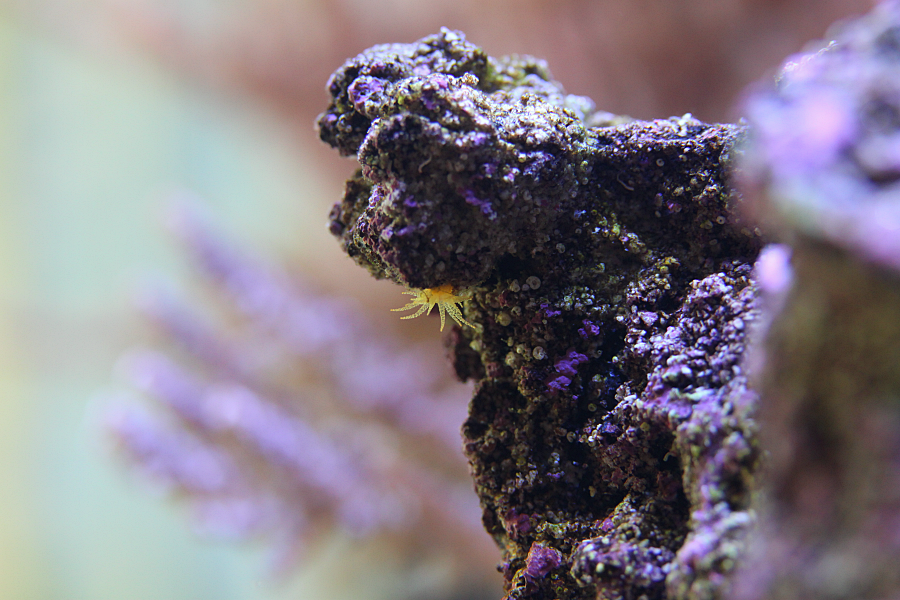
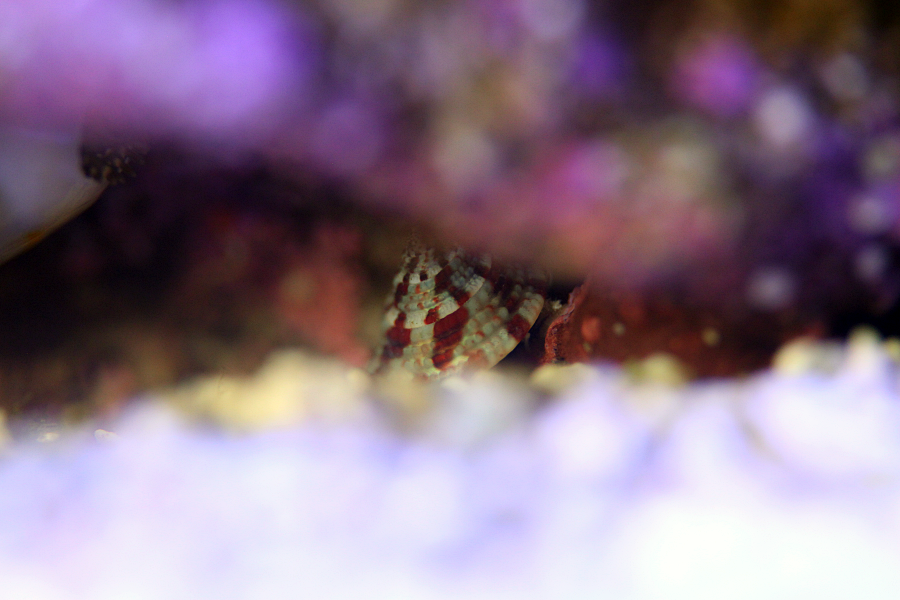
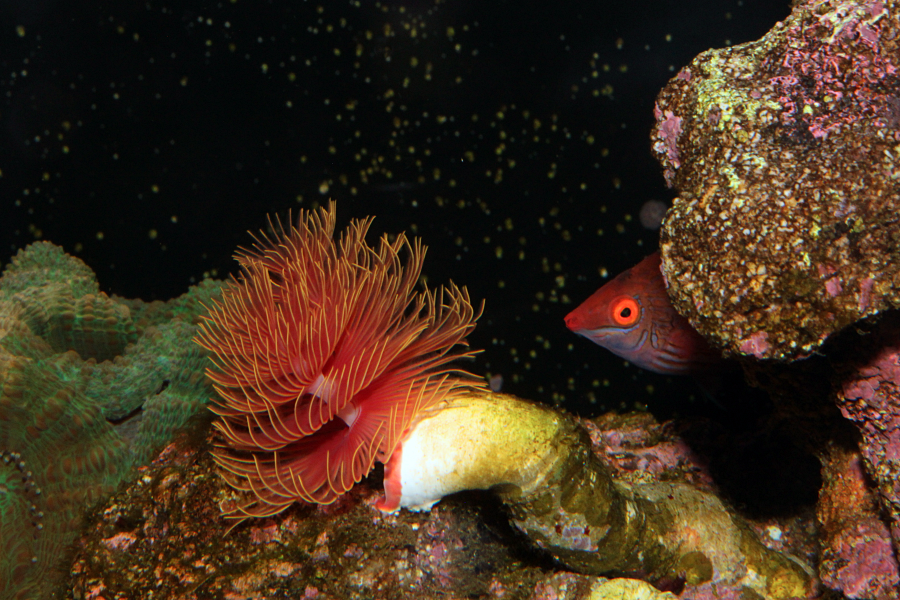
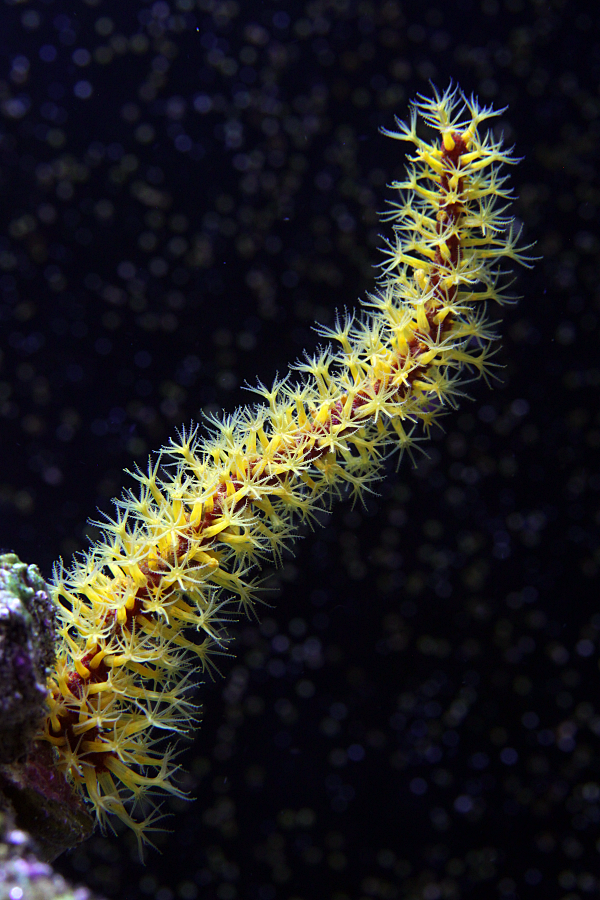
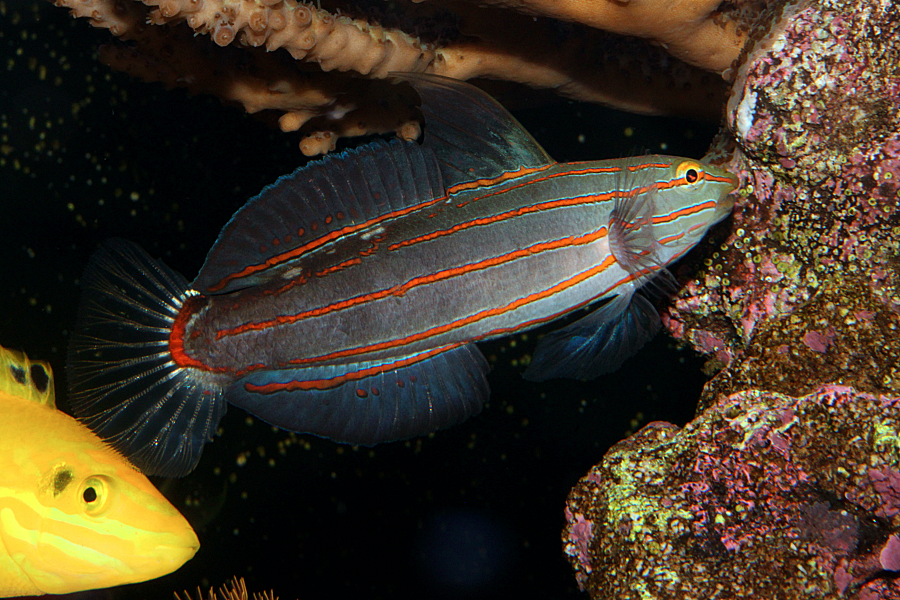
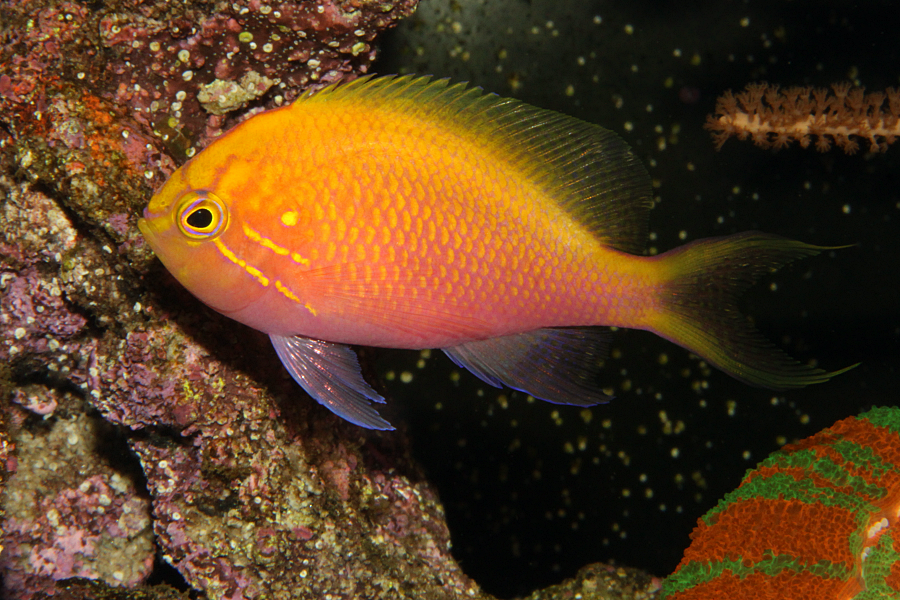
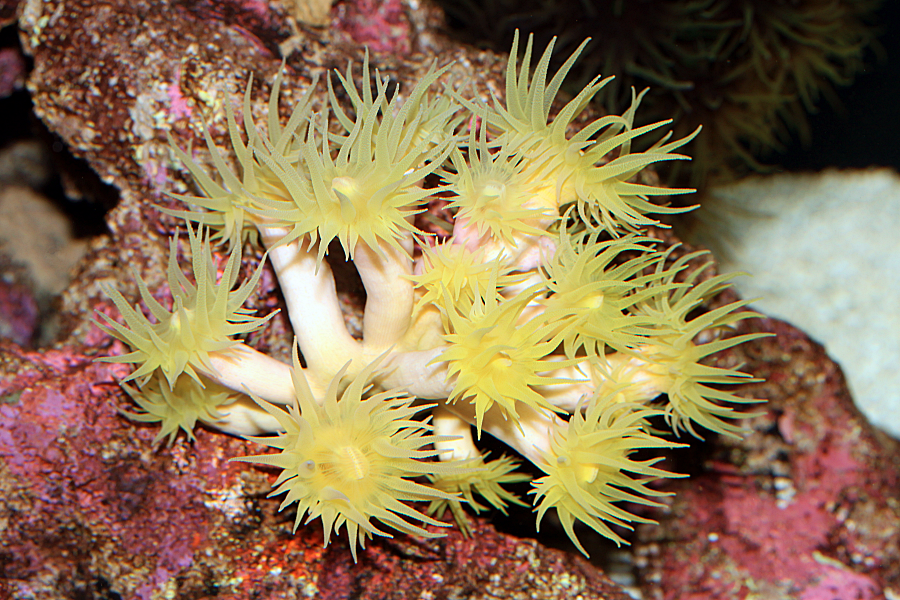
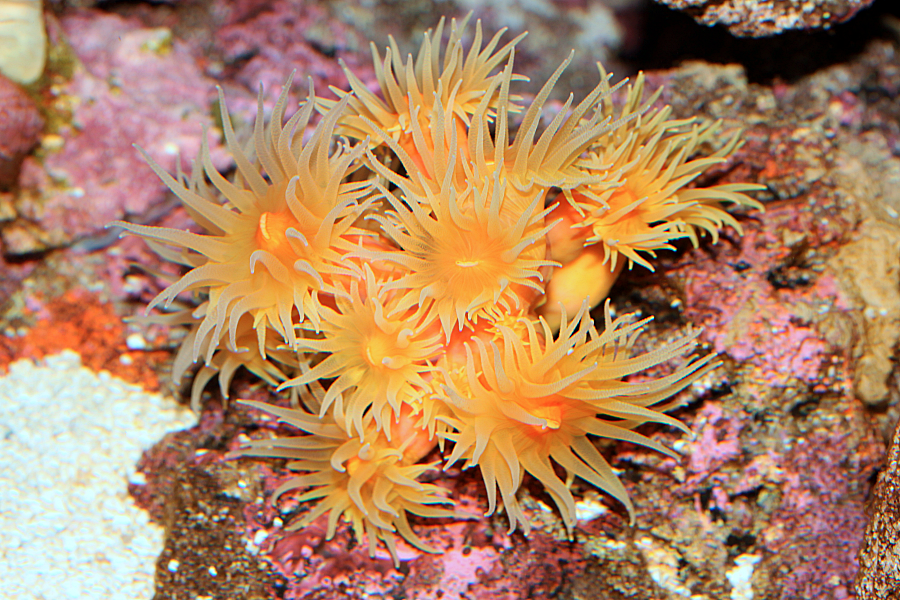
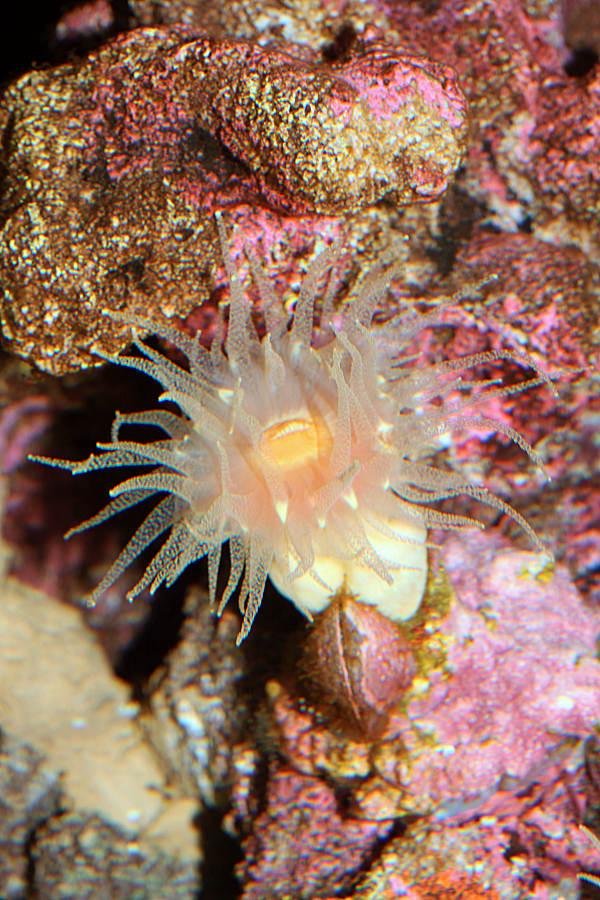
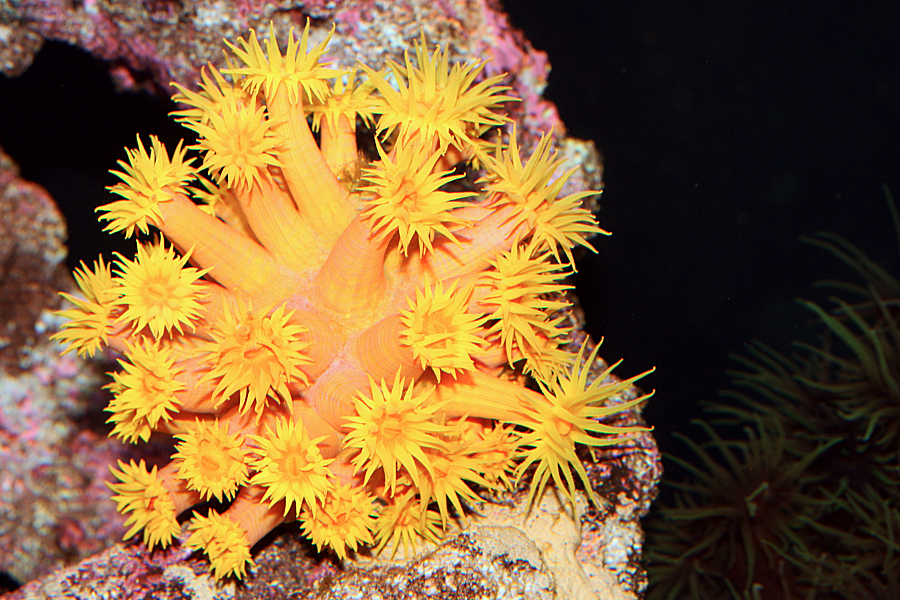
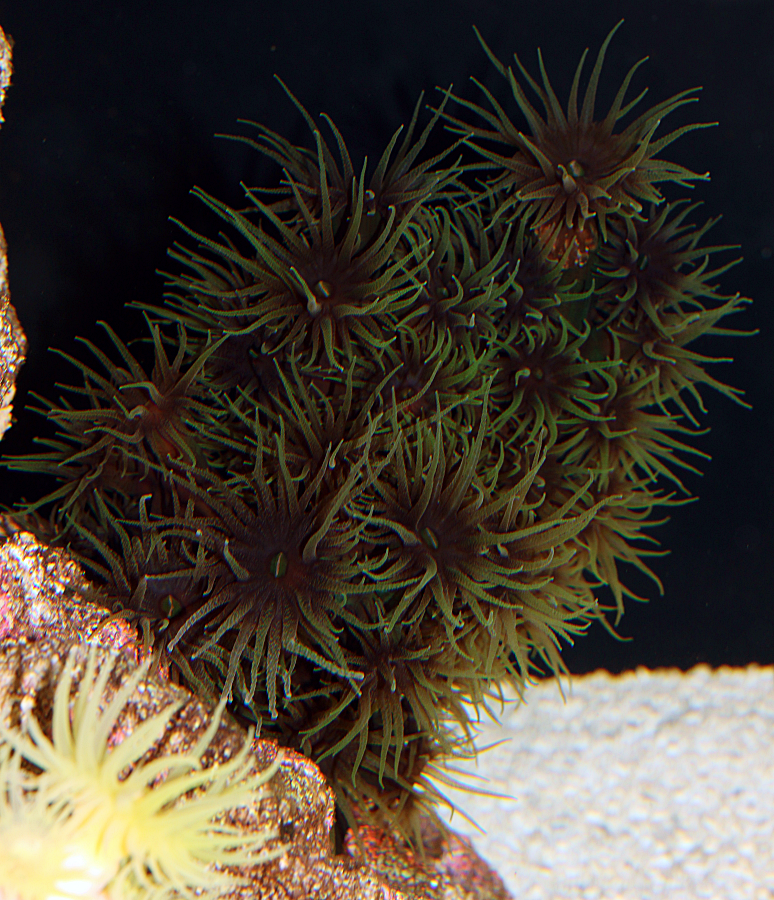
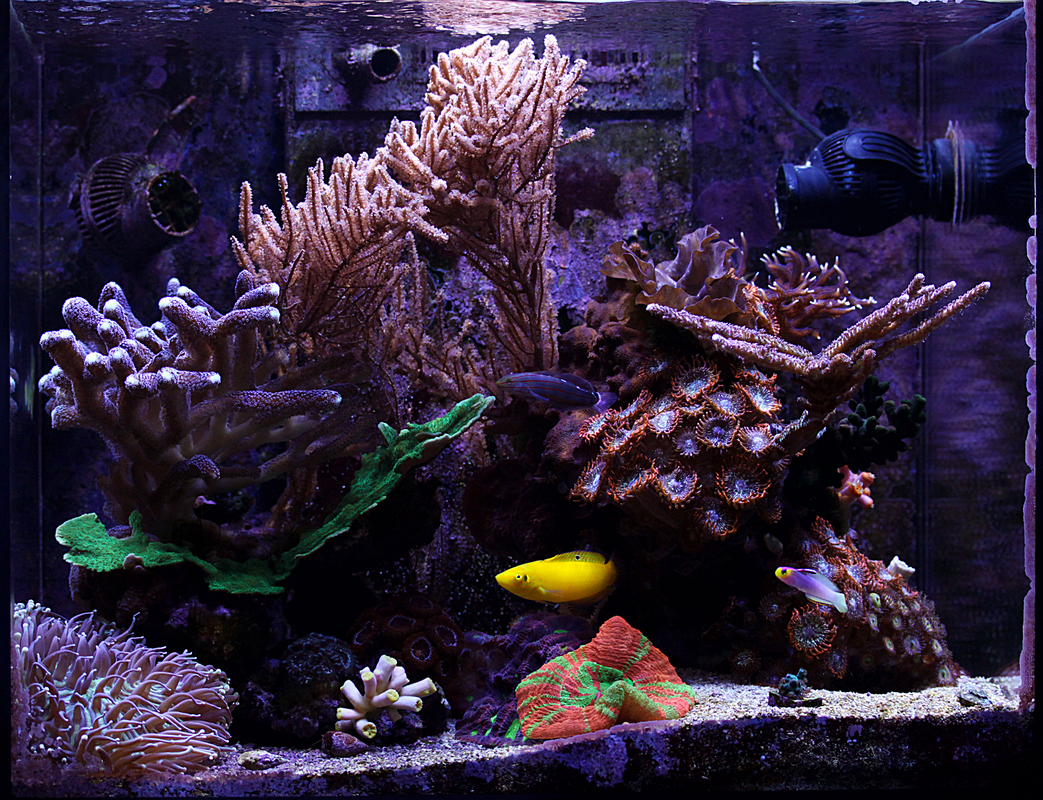
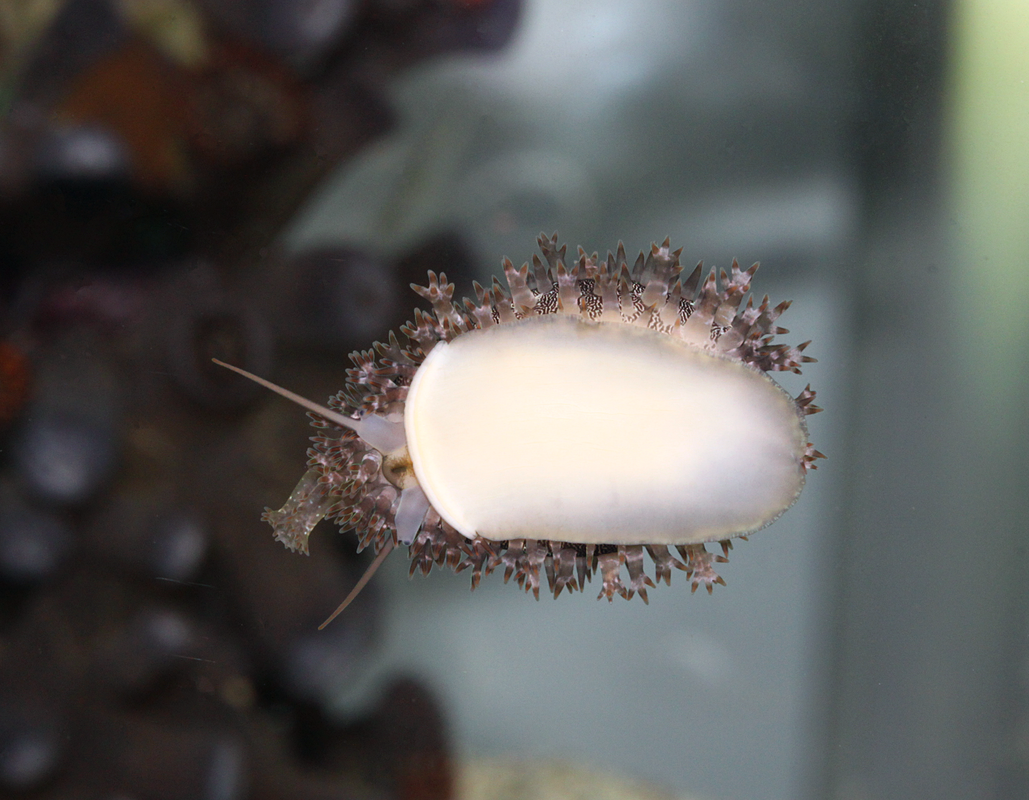
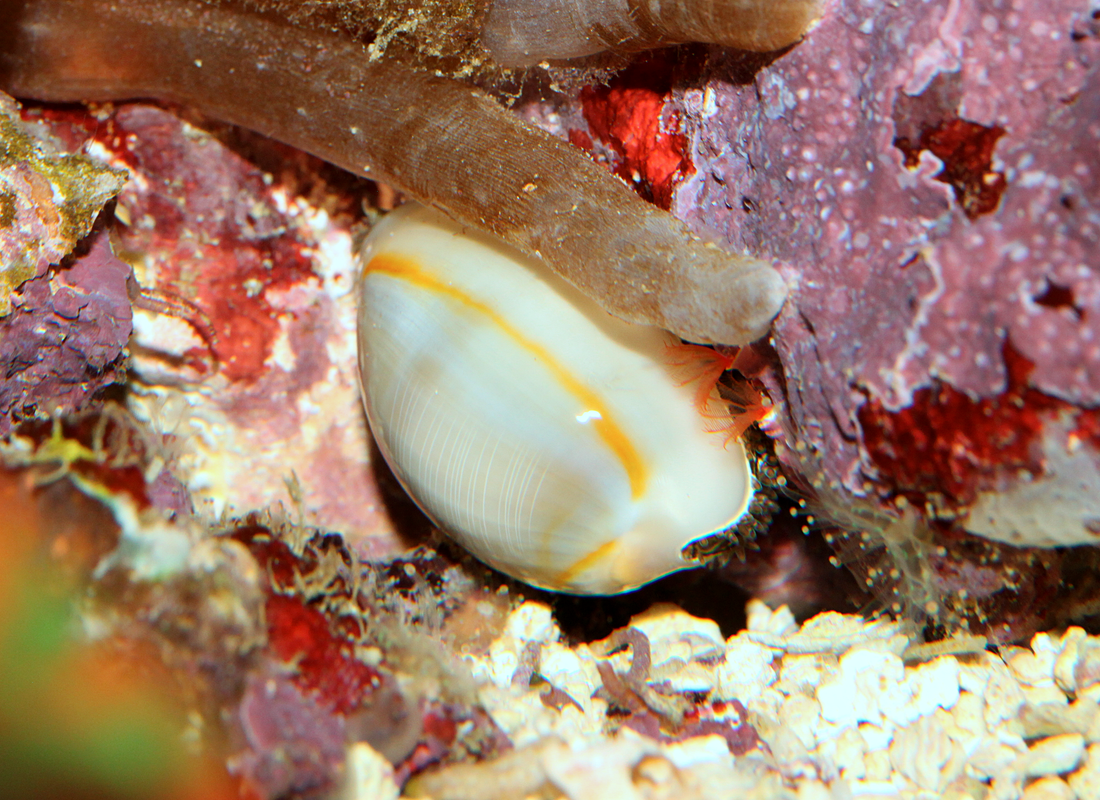
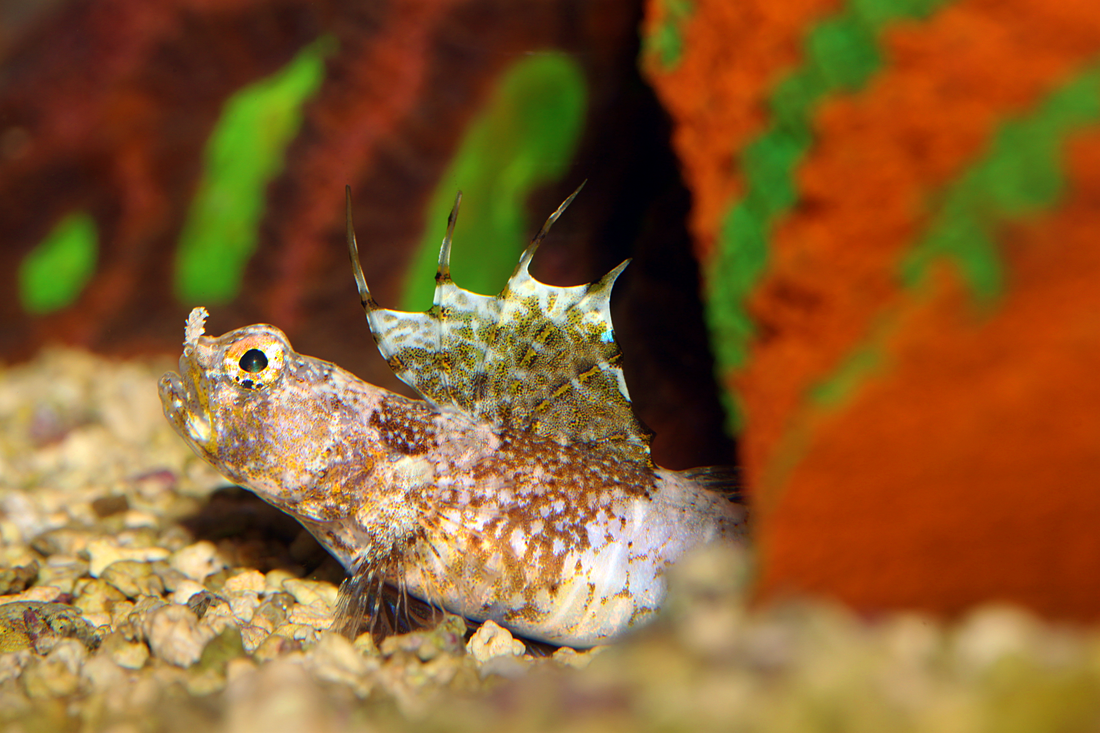
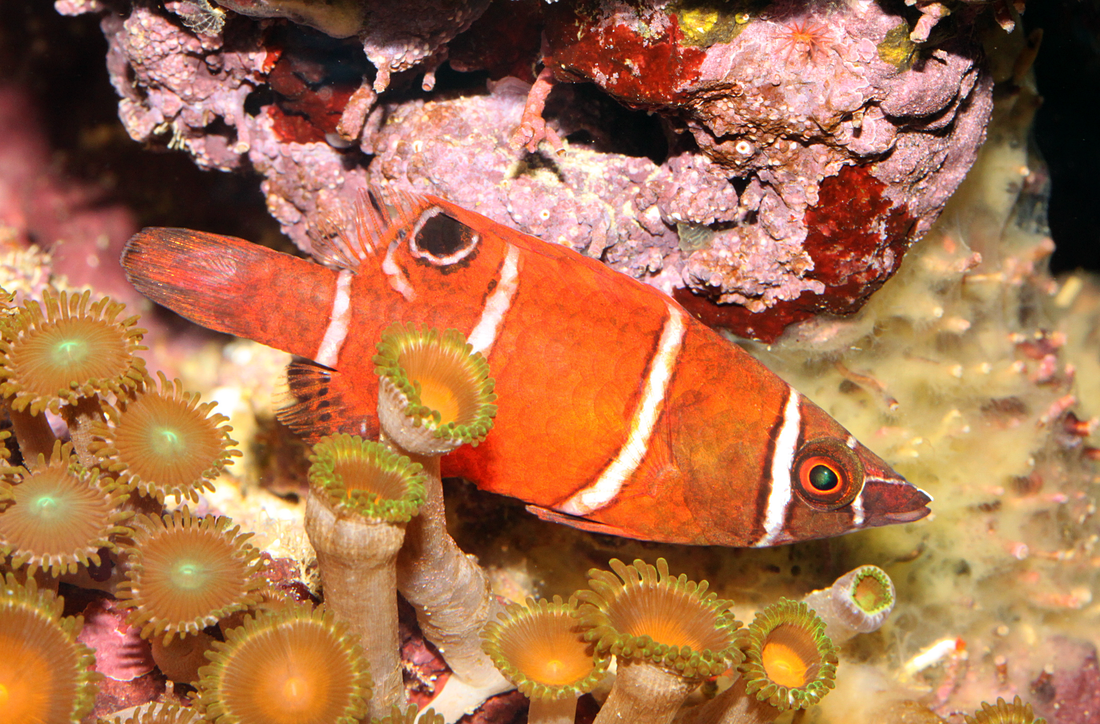
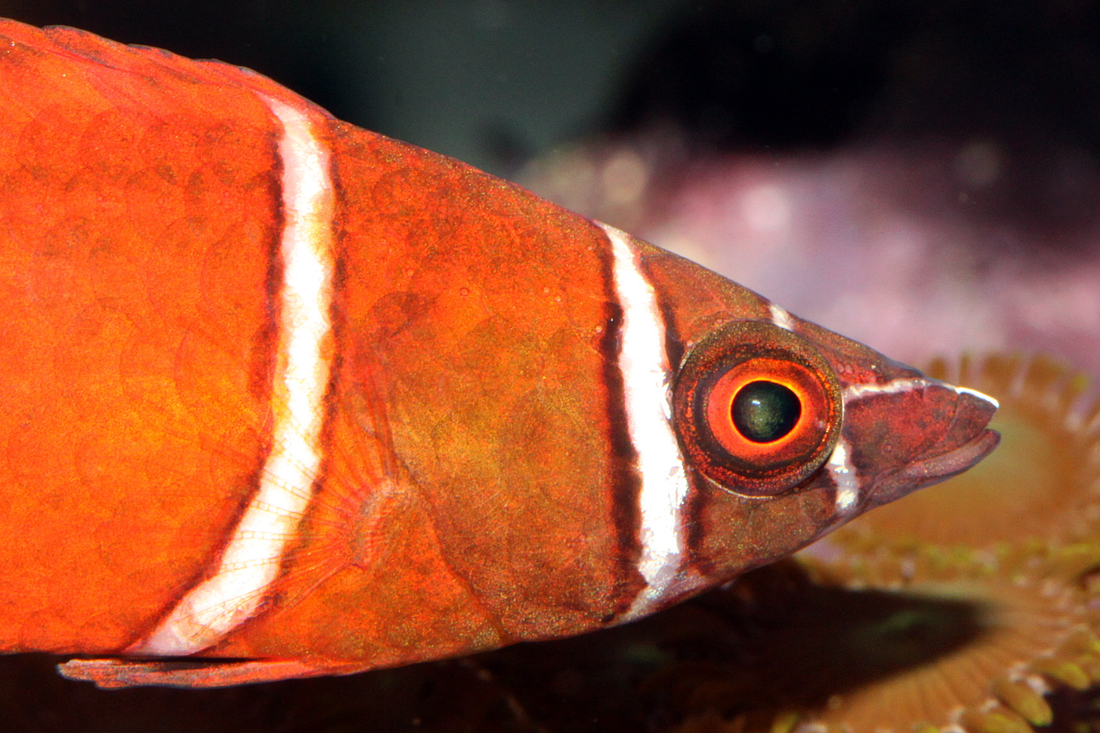
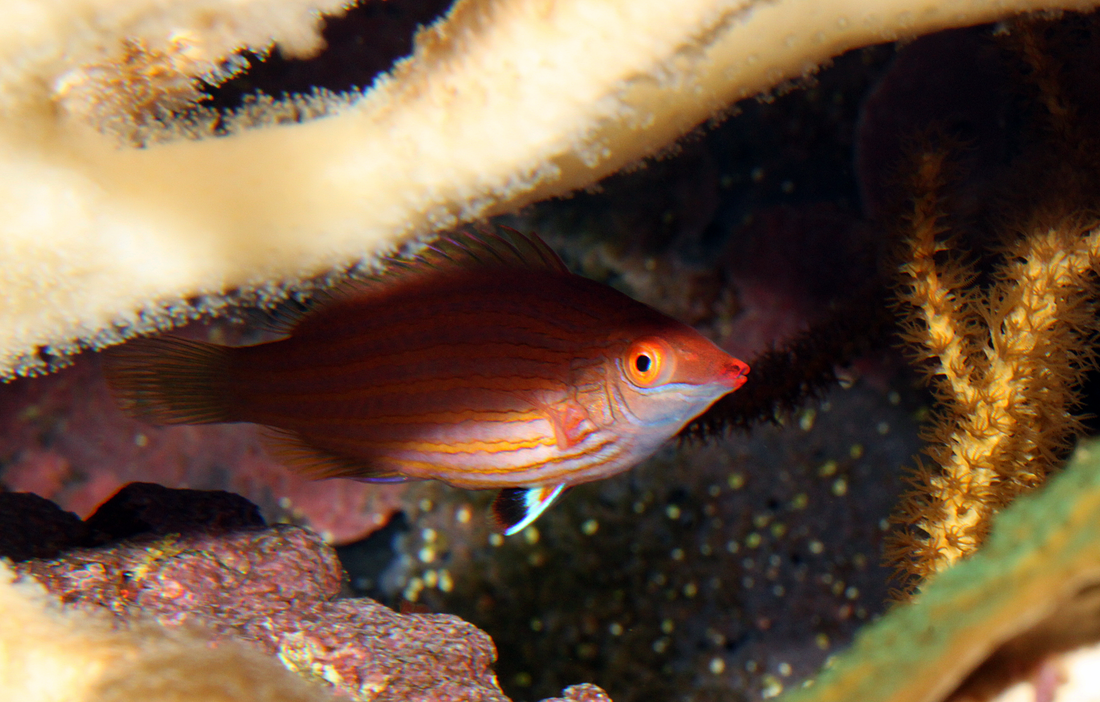
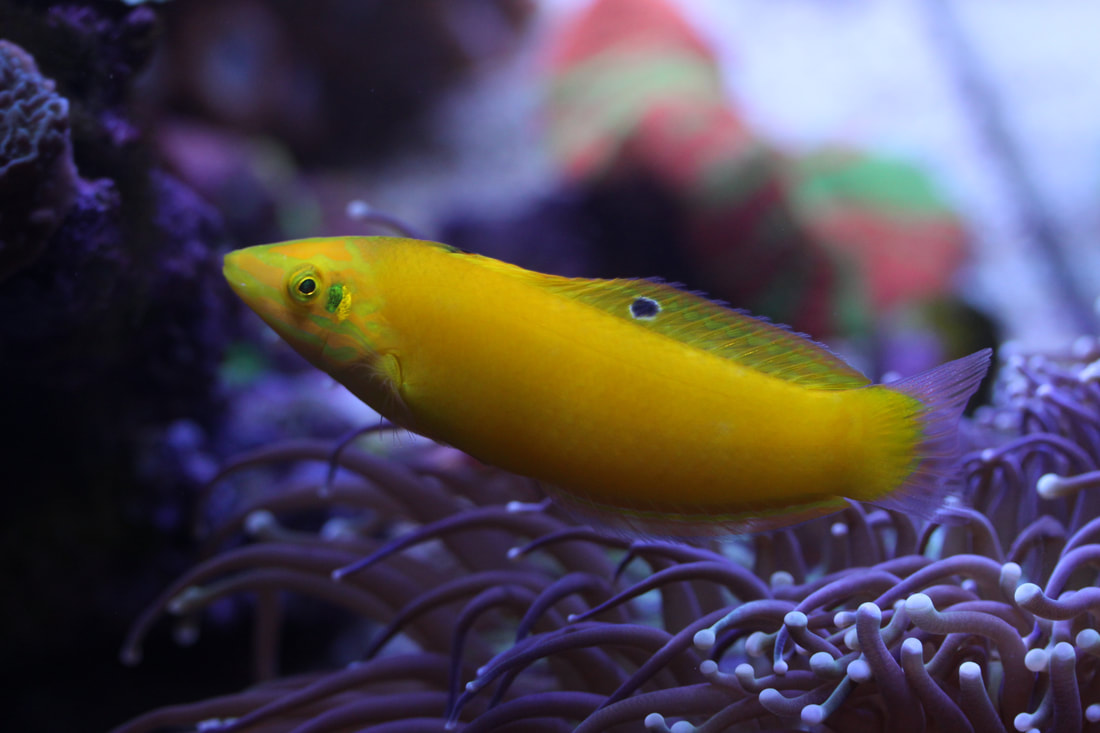
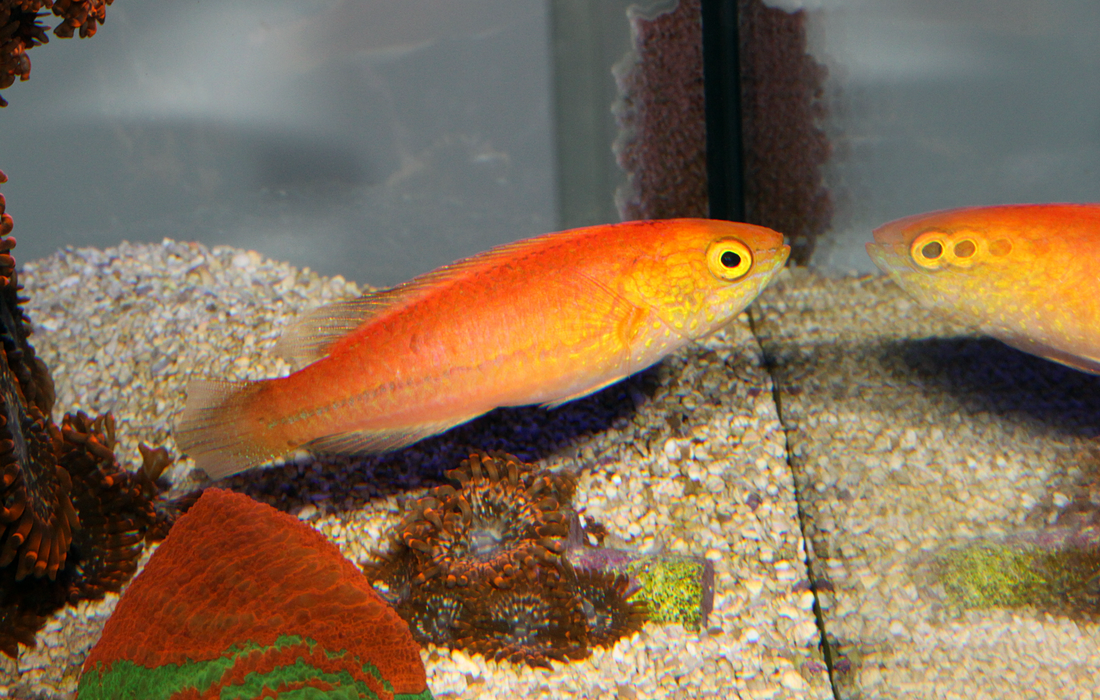
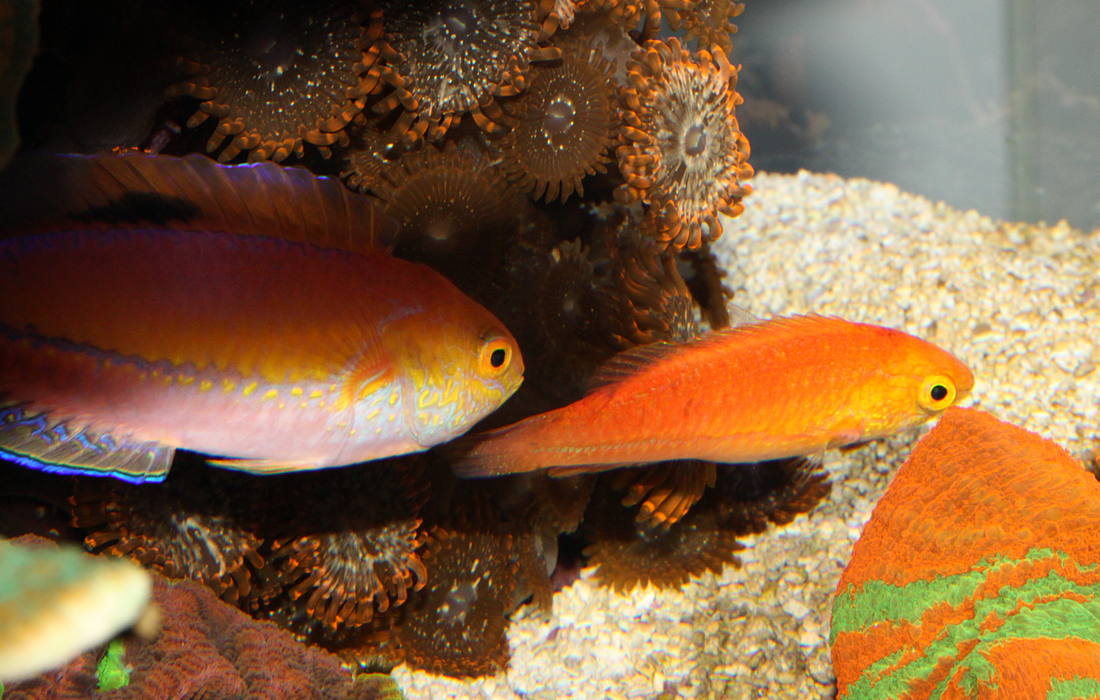
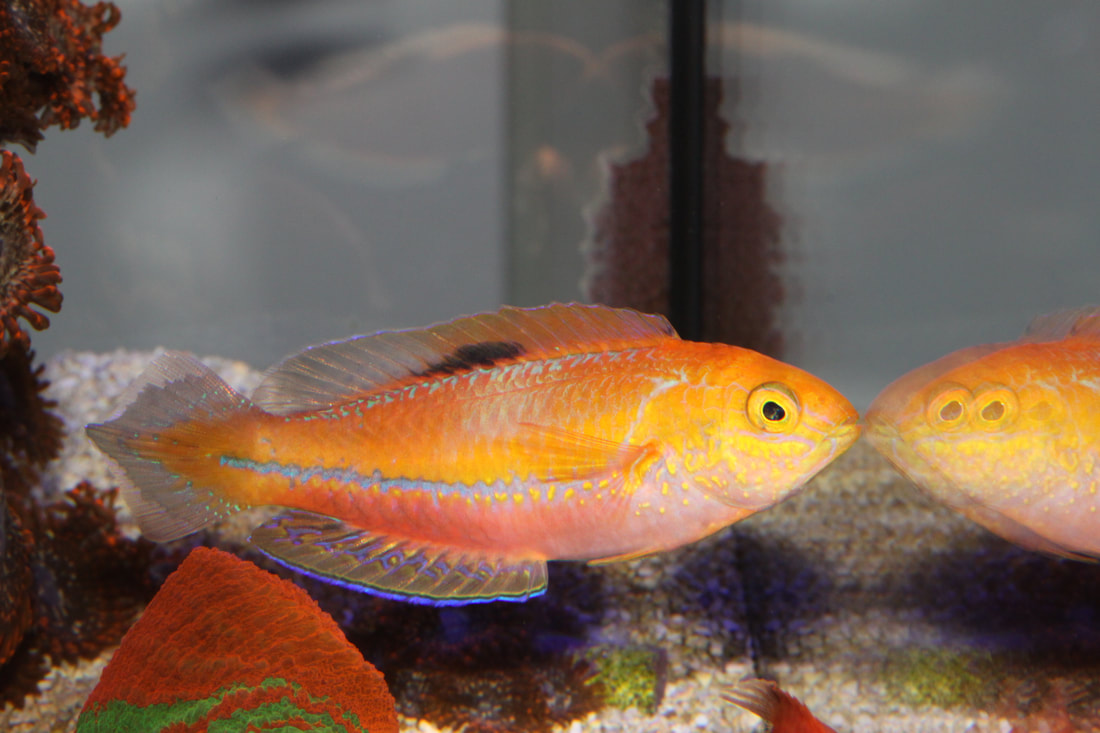
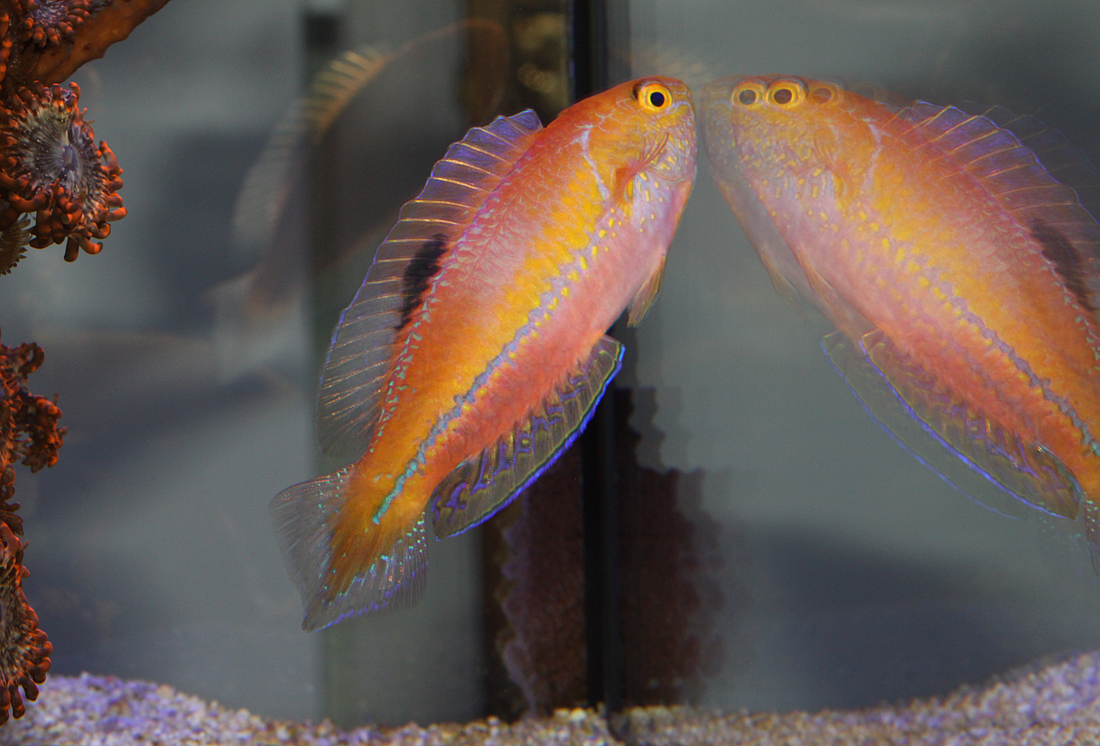
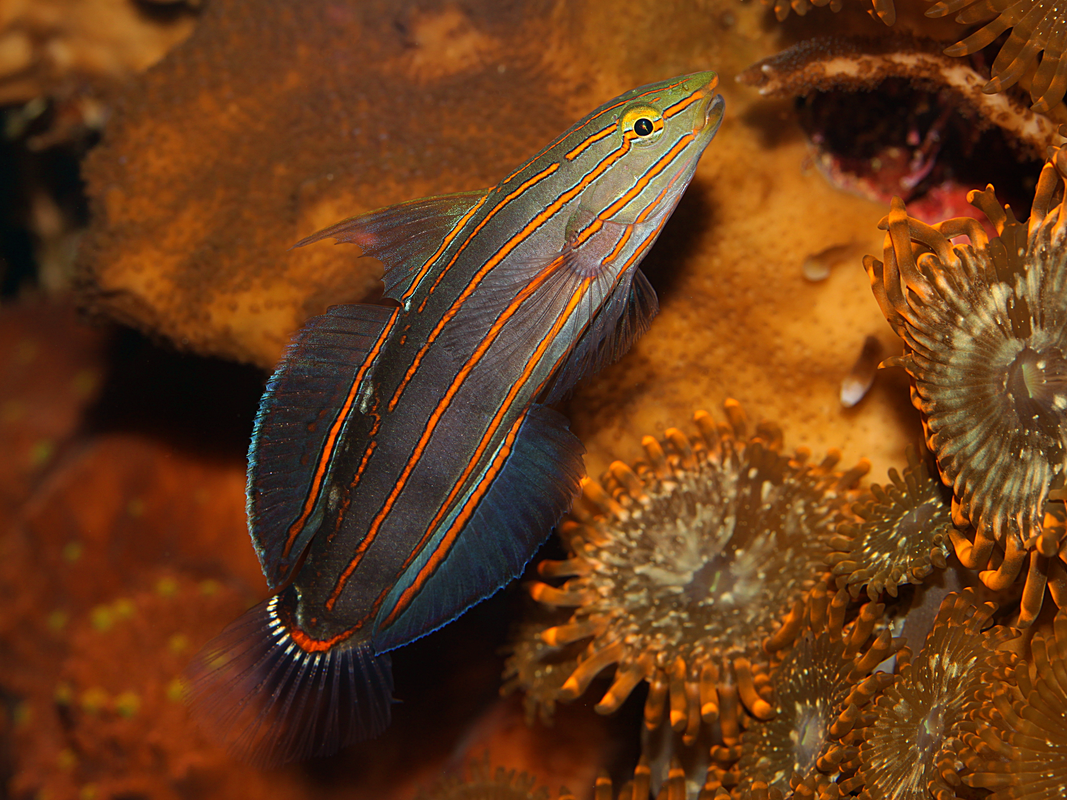
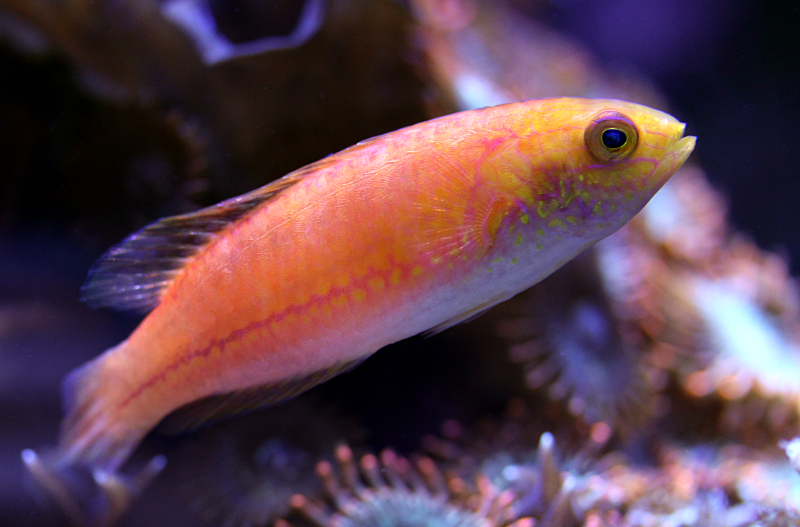
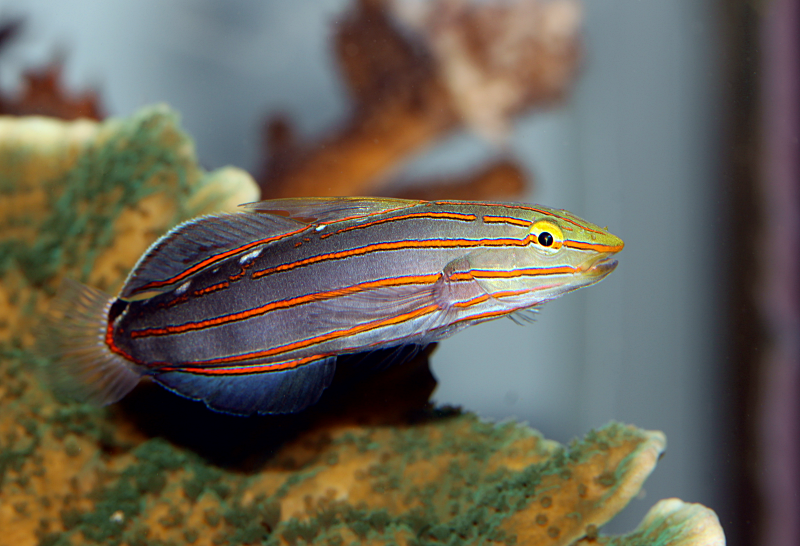
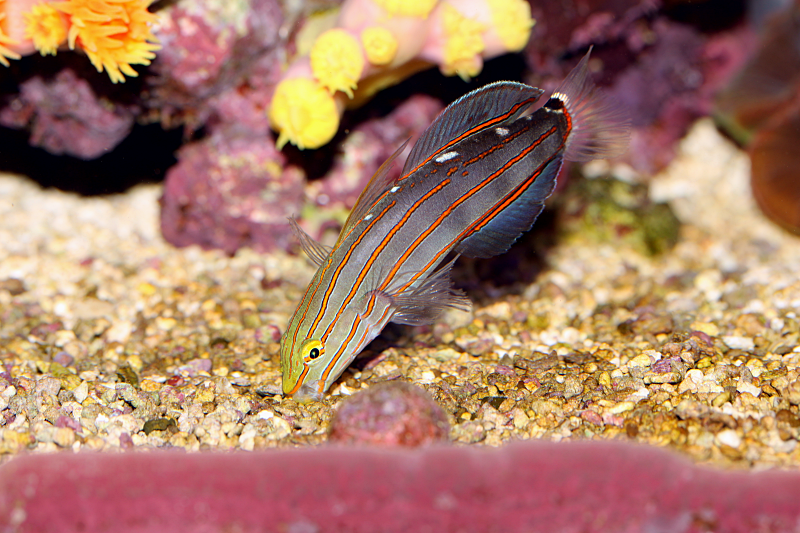
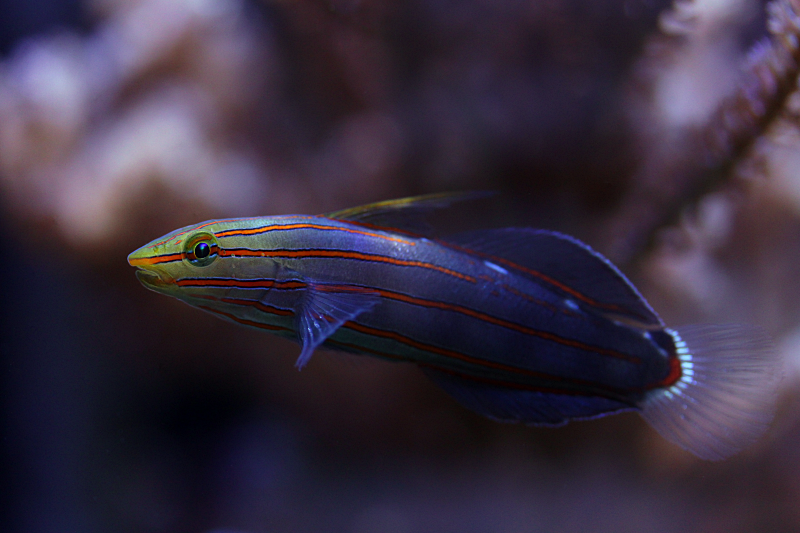
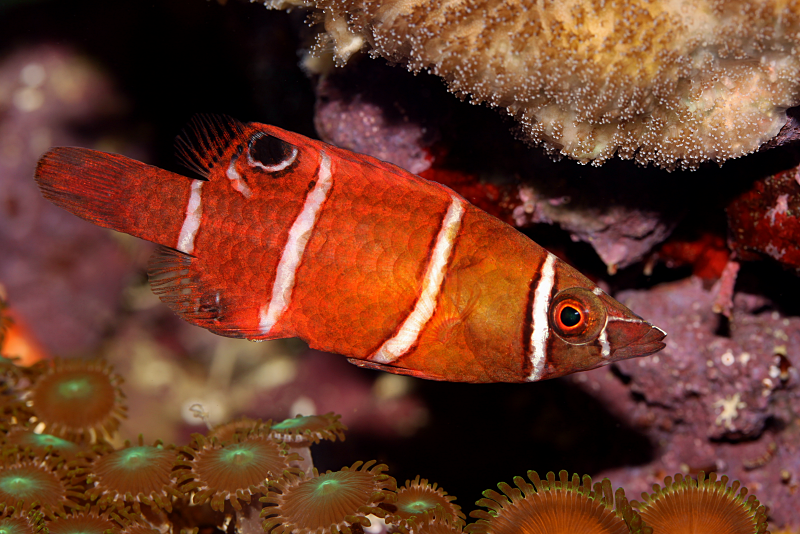
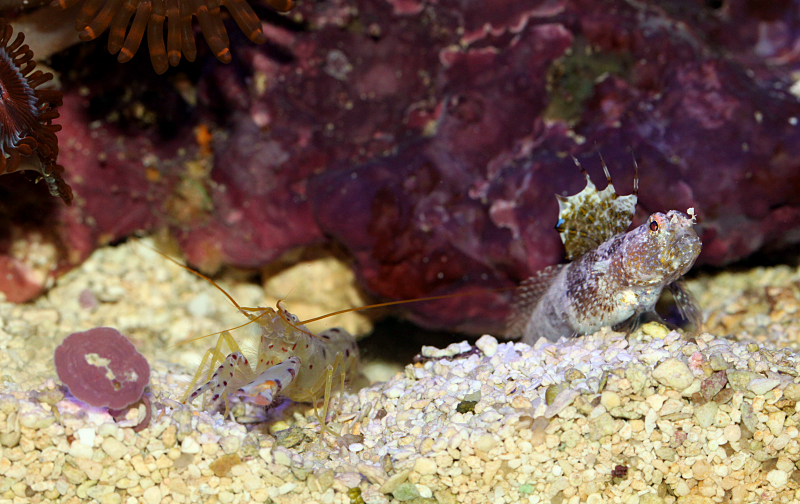
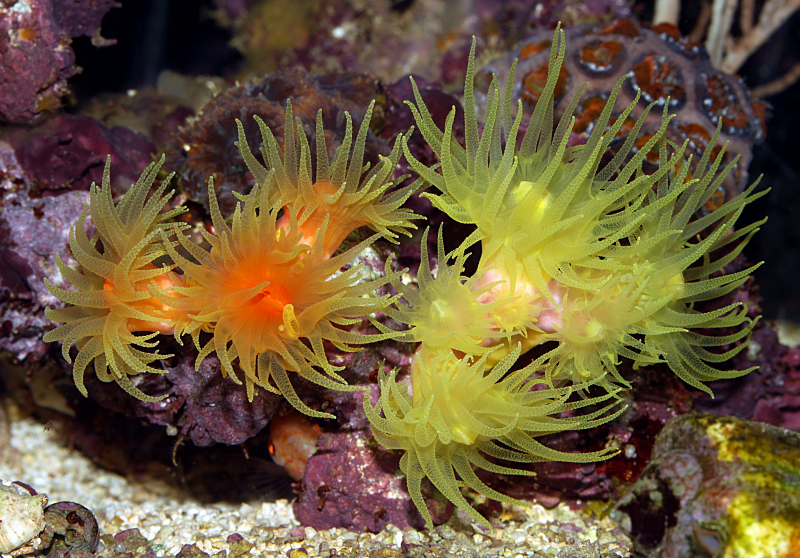
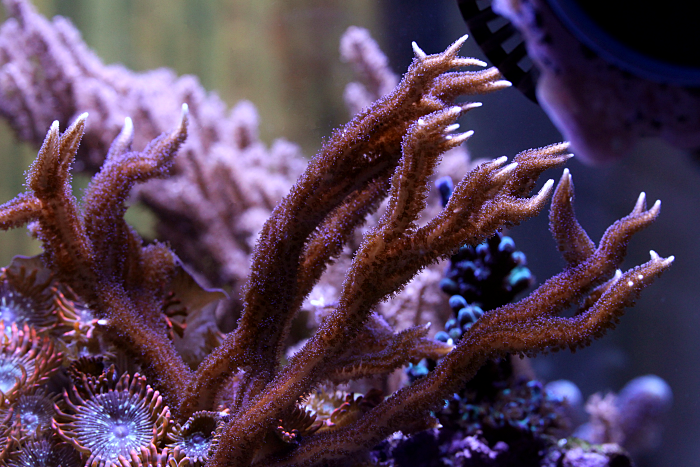
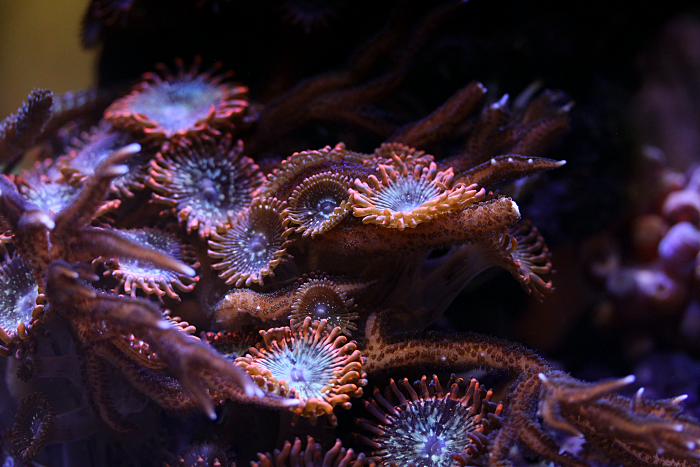
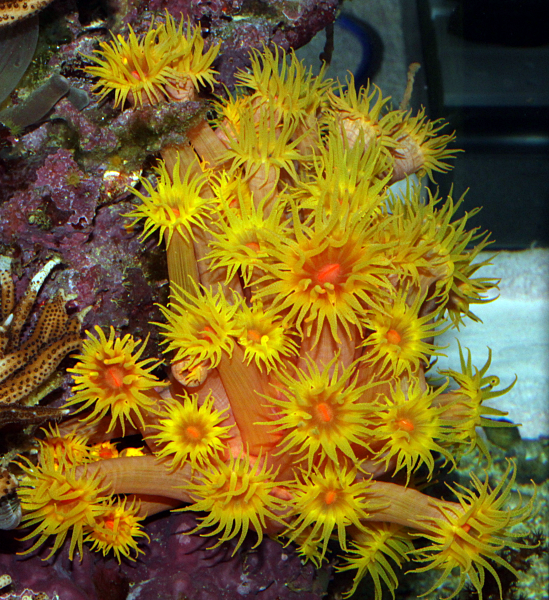
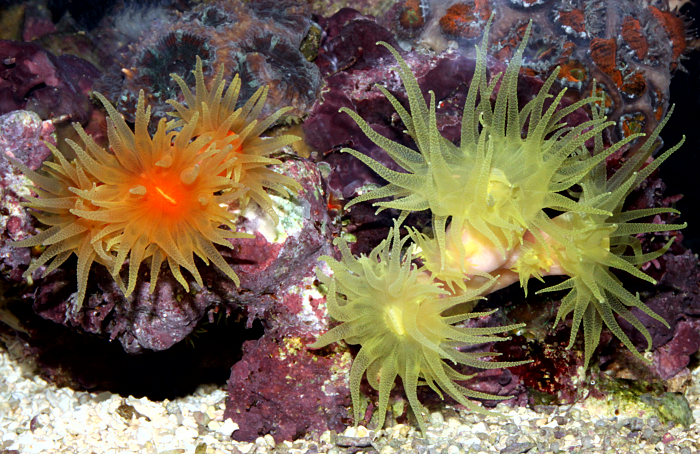
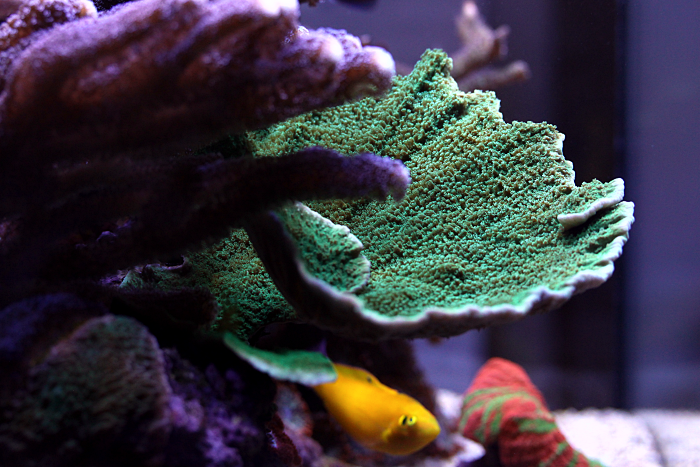
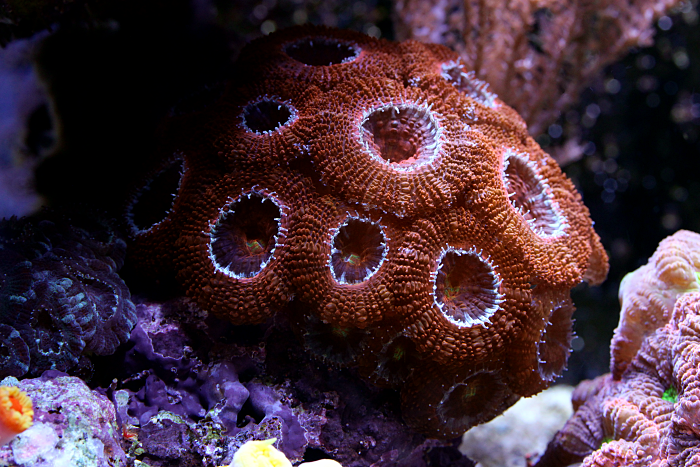
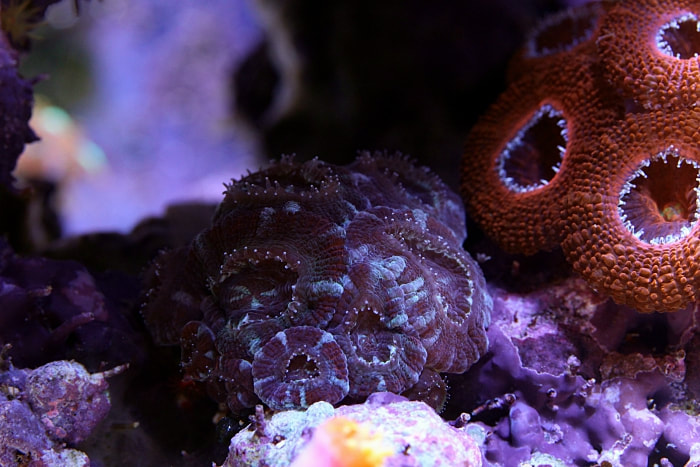
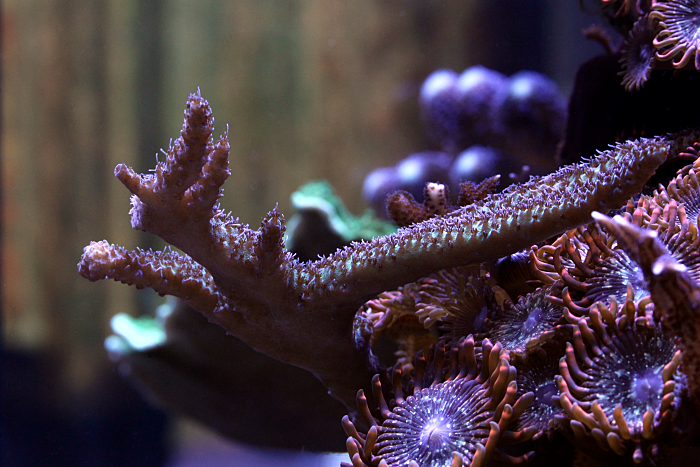
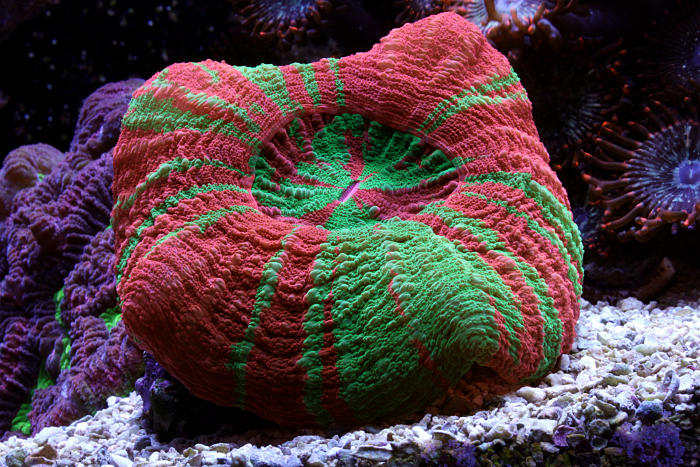
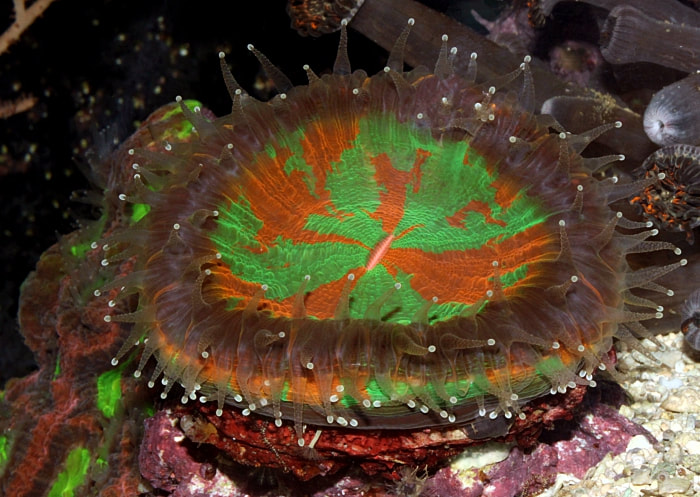
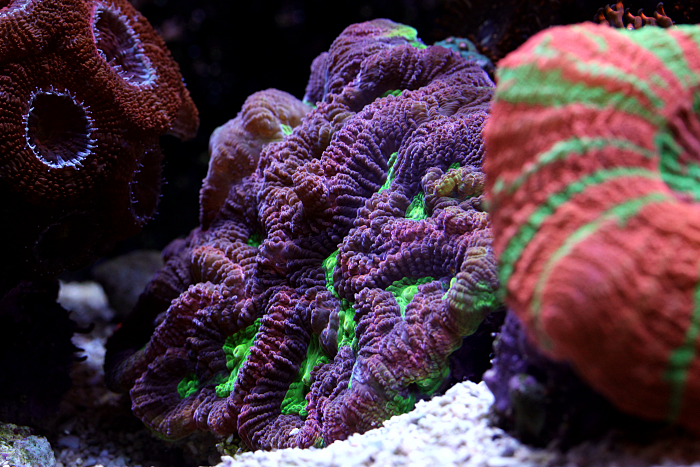
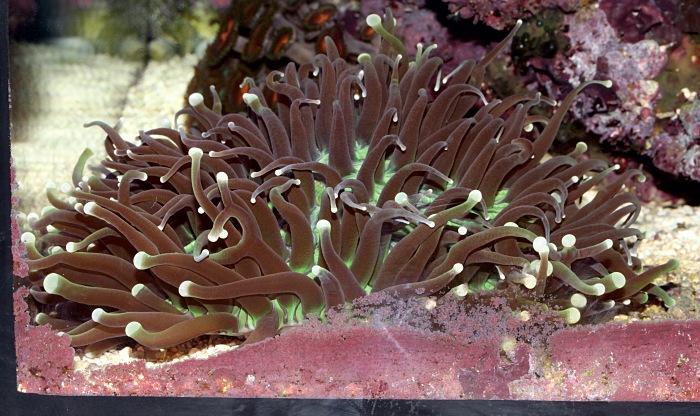
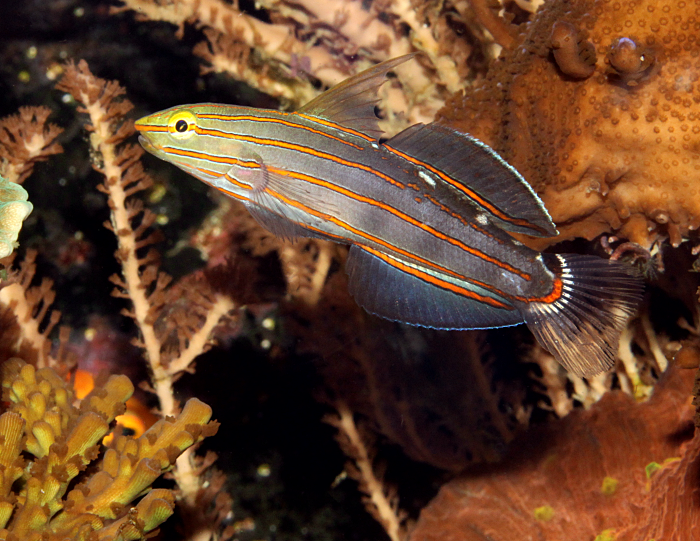
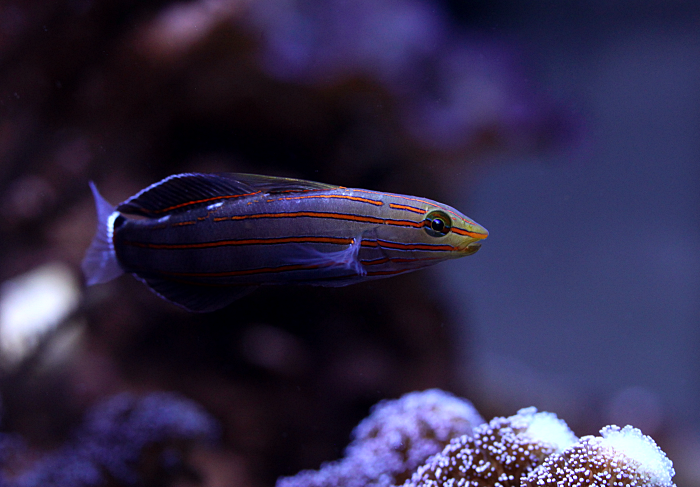
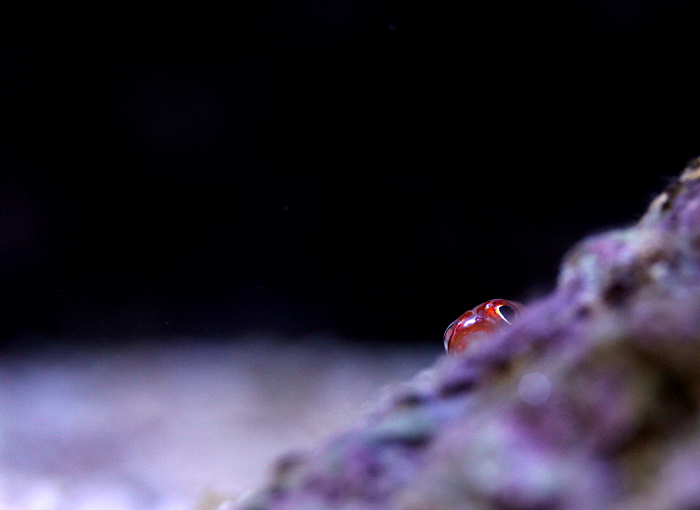
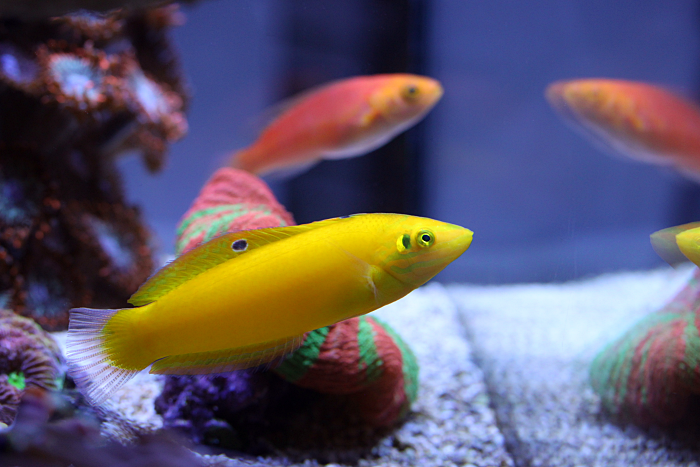

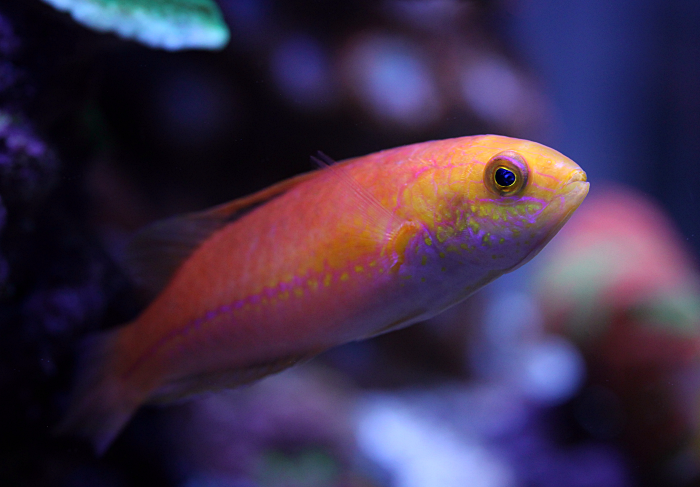
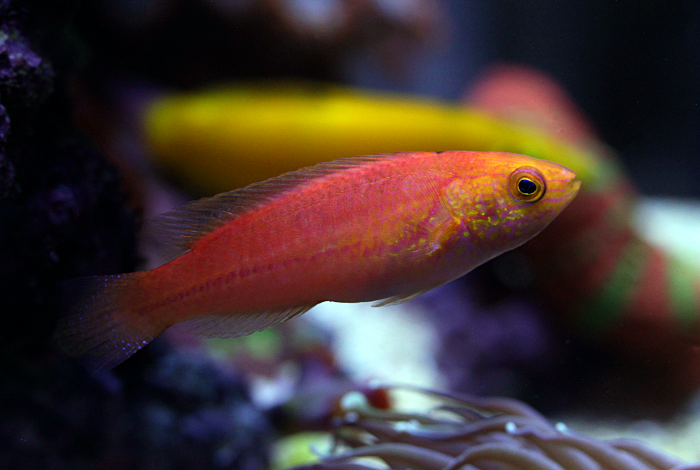
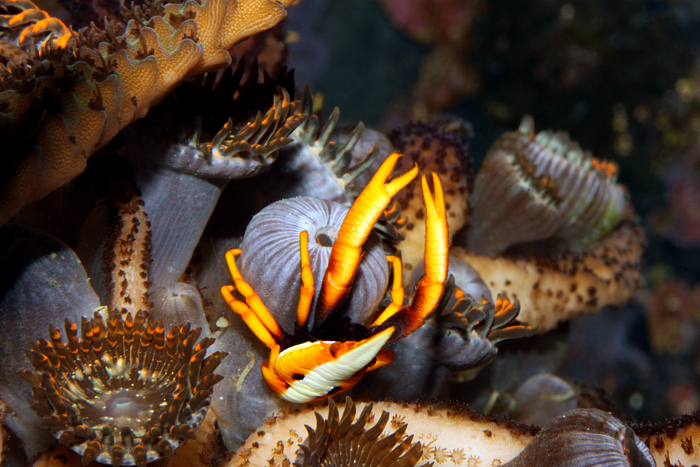
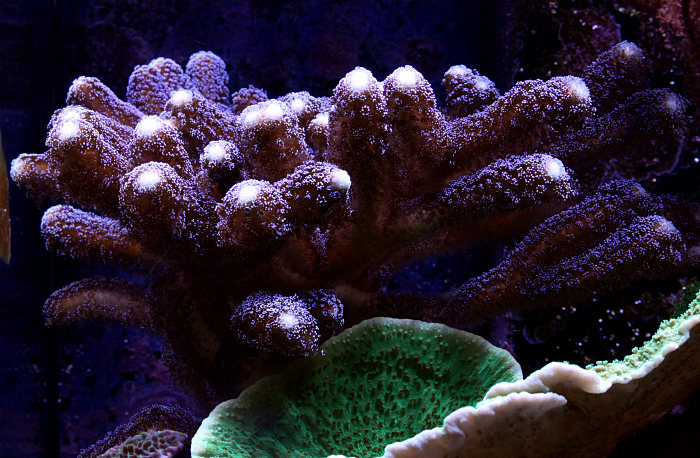
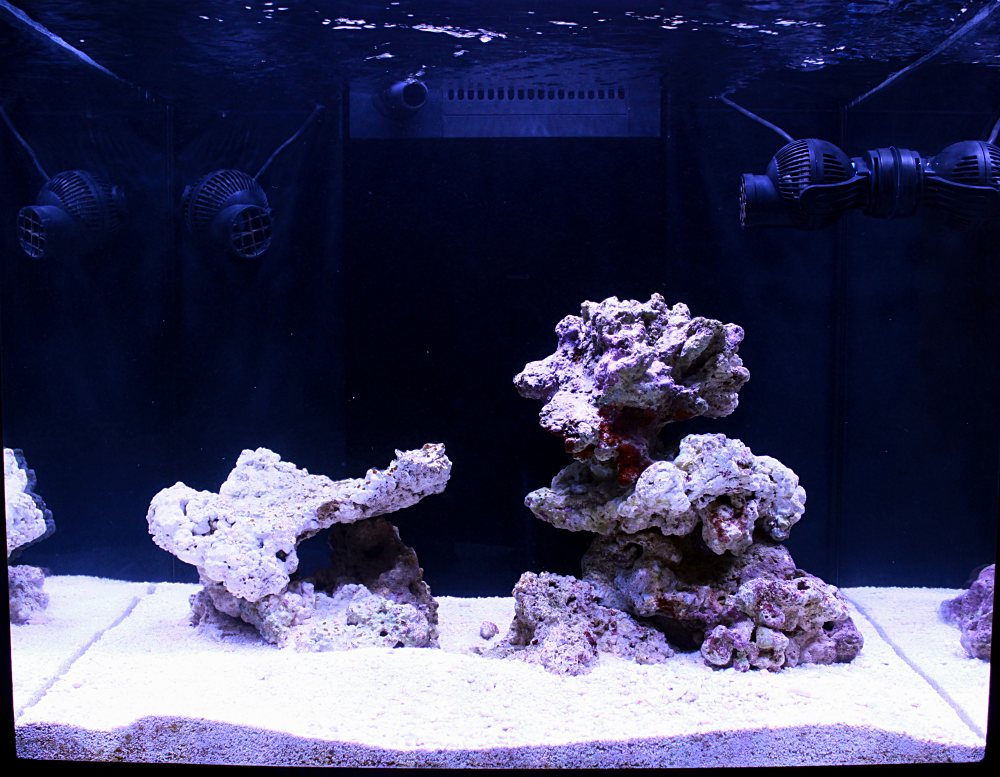
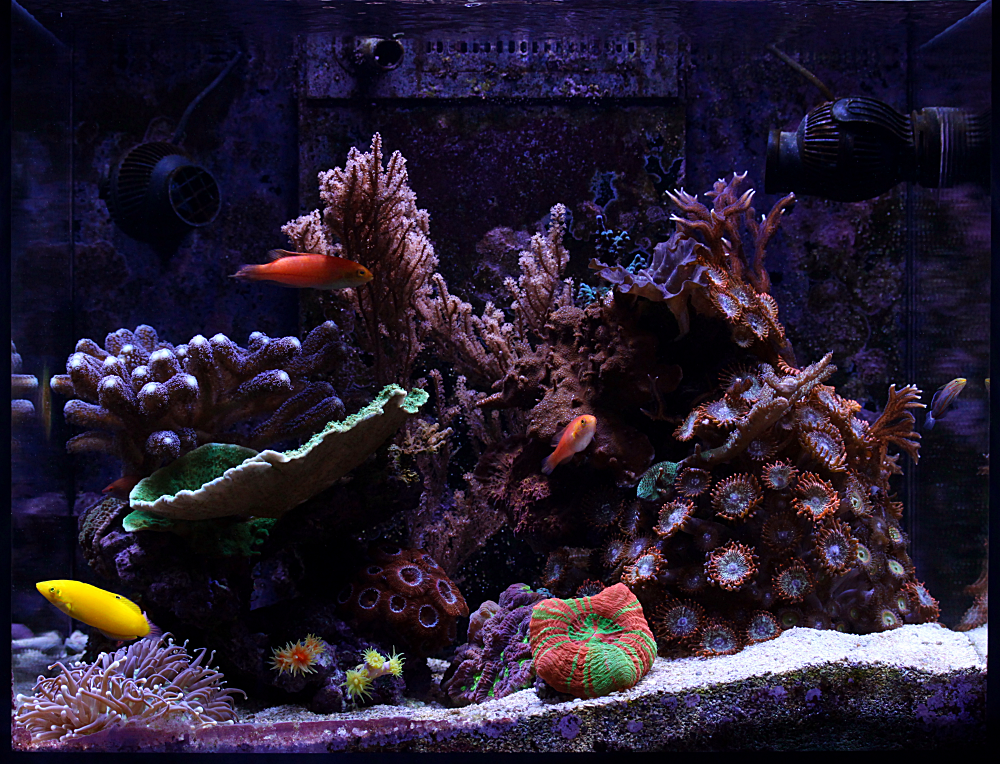
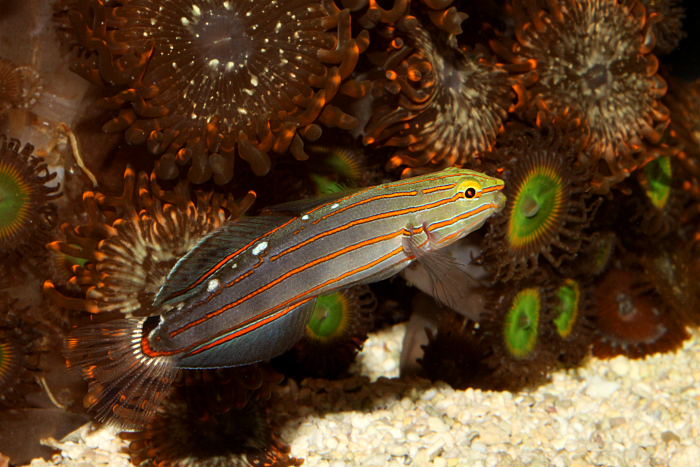
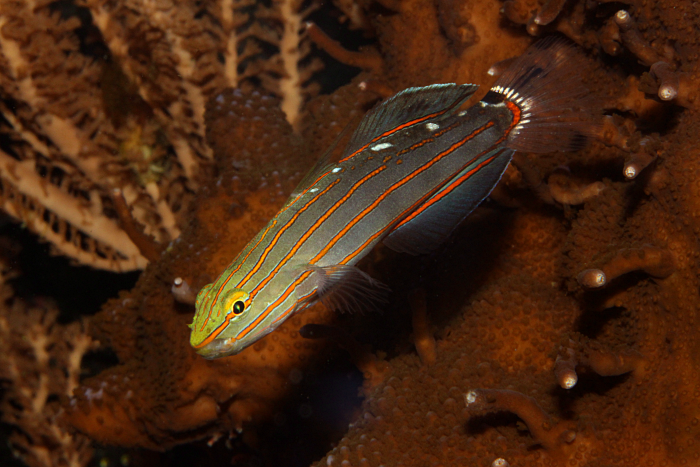
 RSS Feed
RSS Feed
